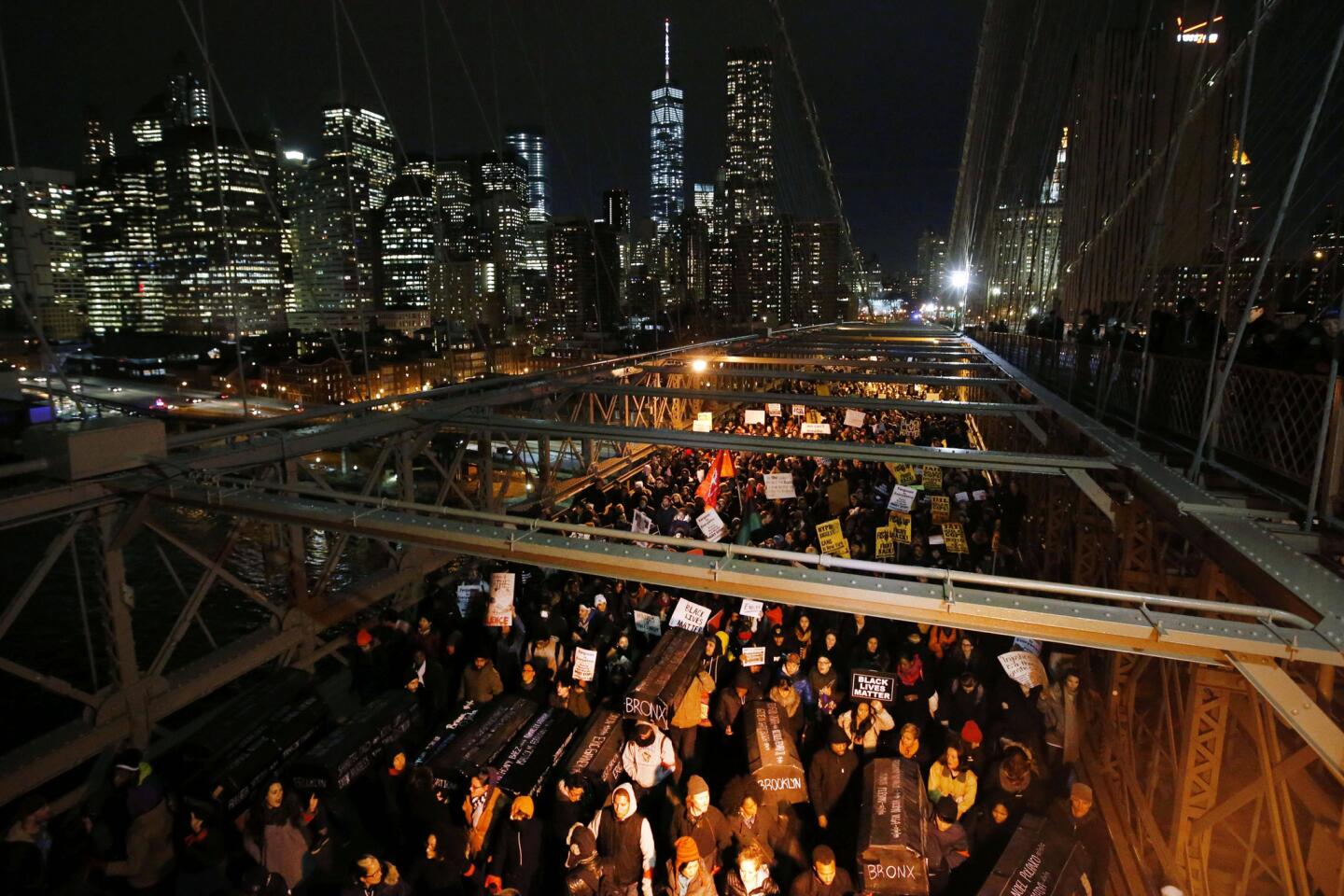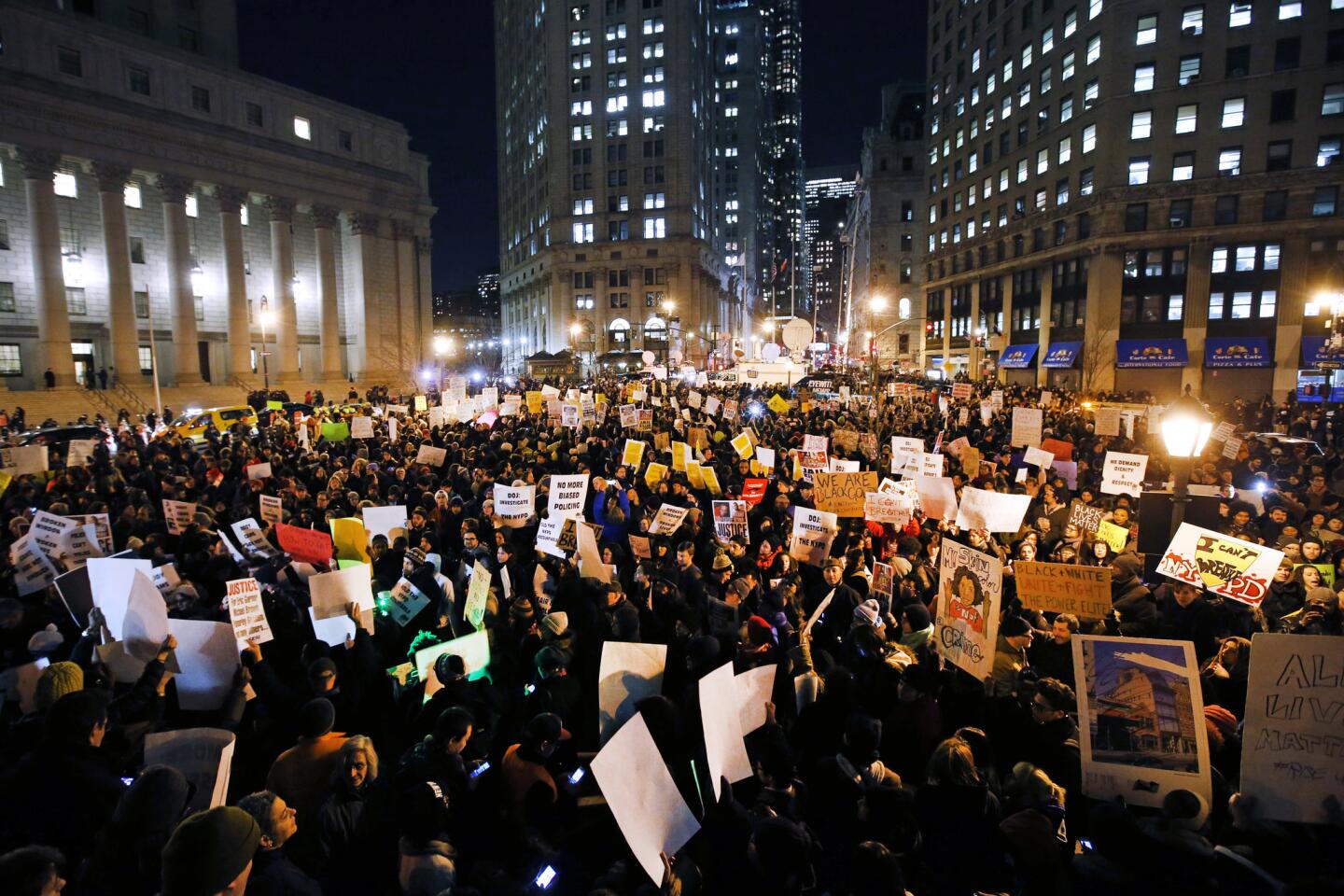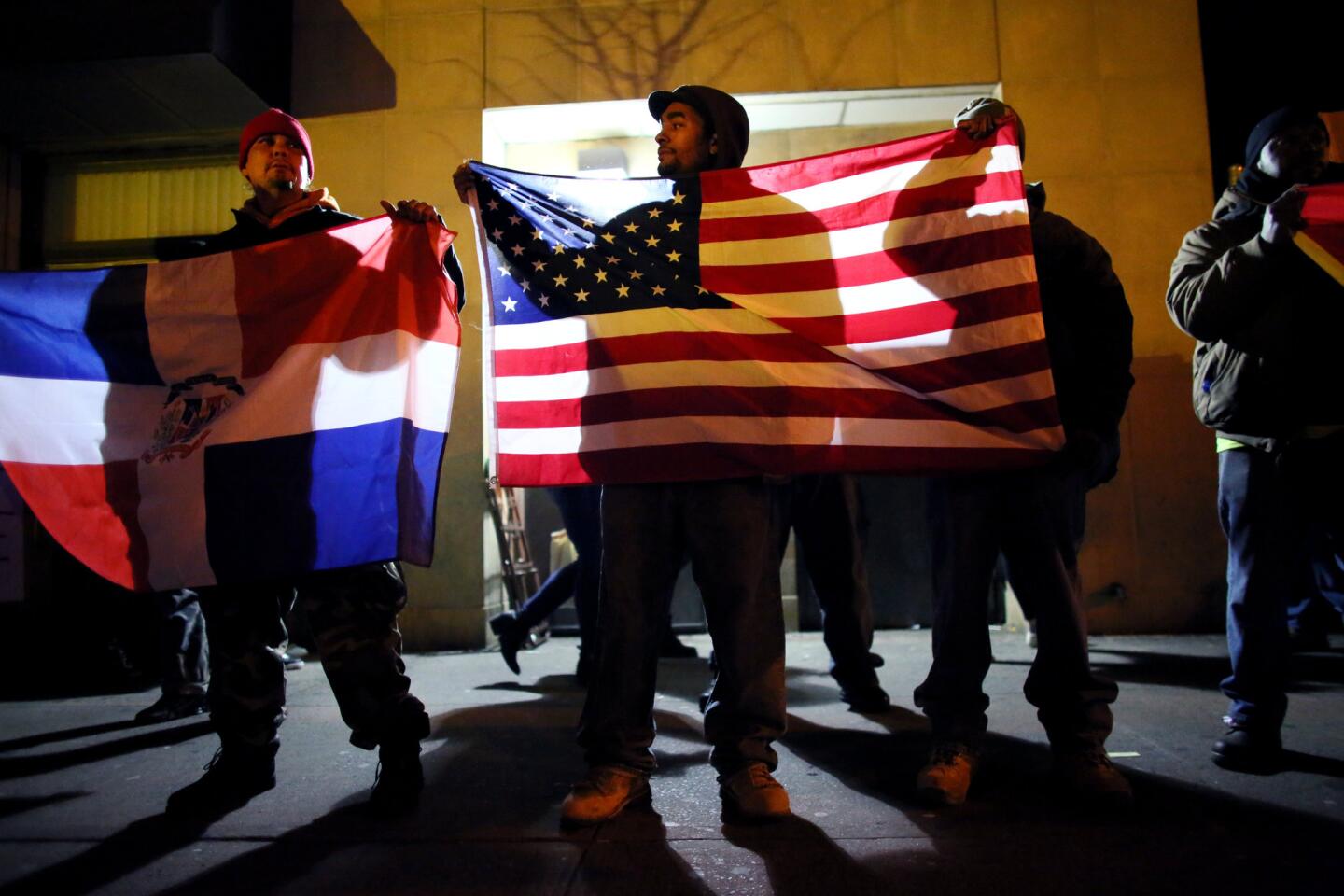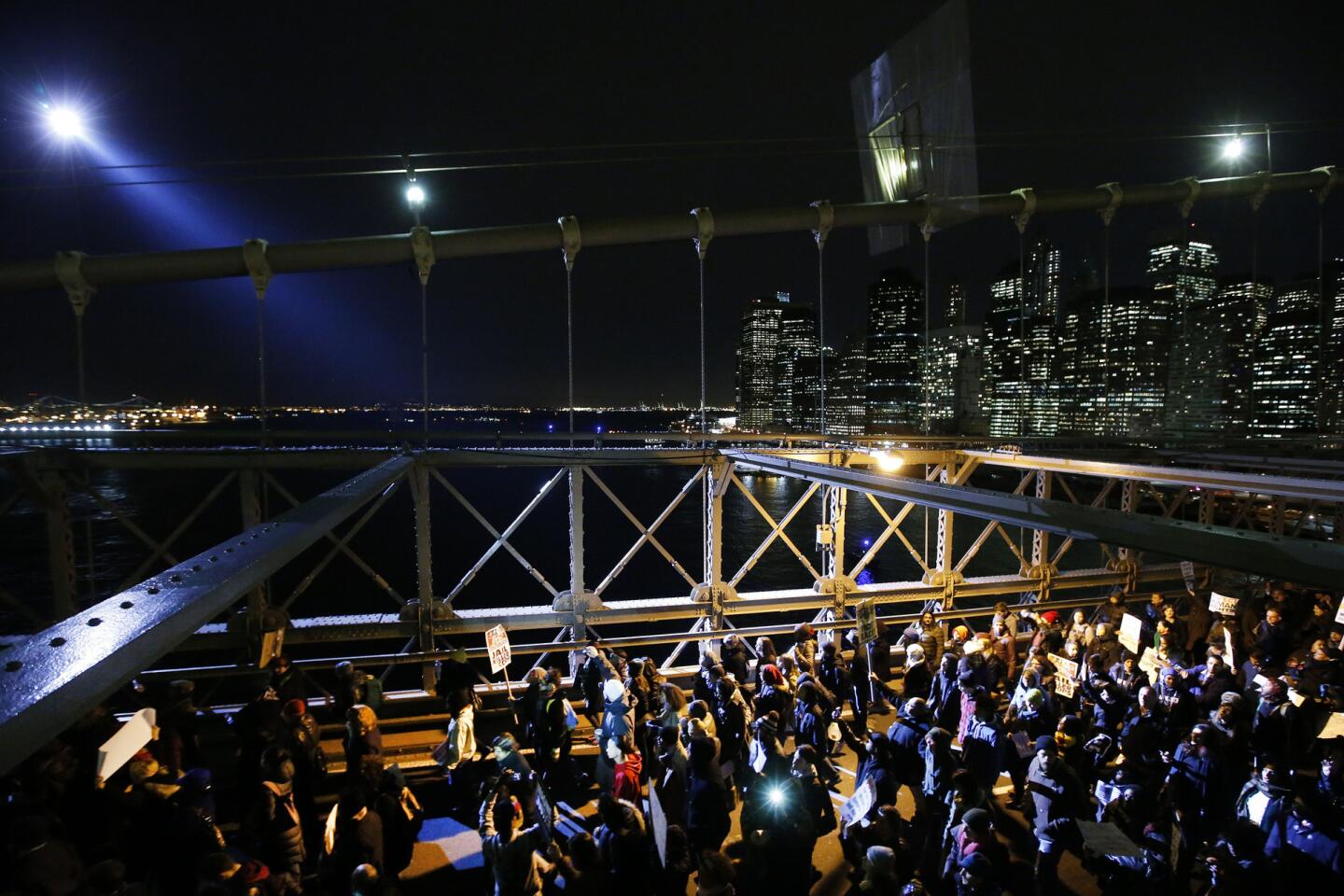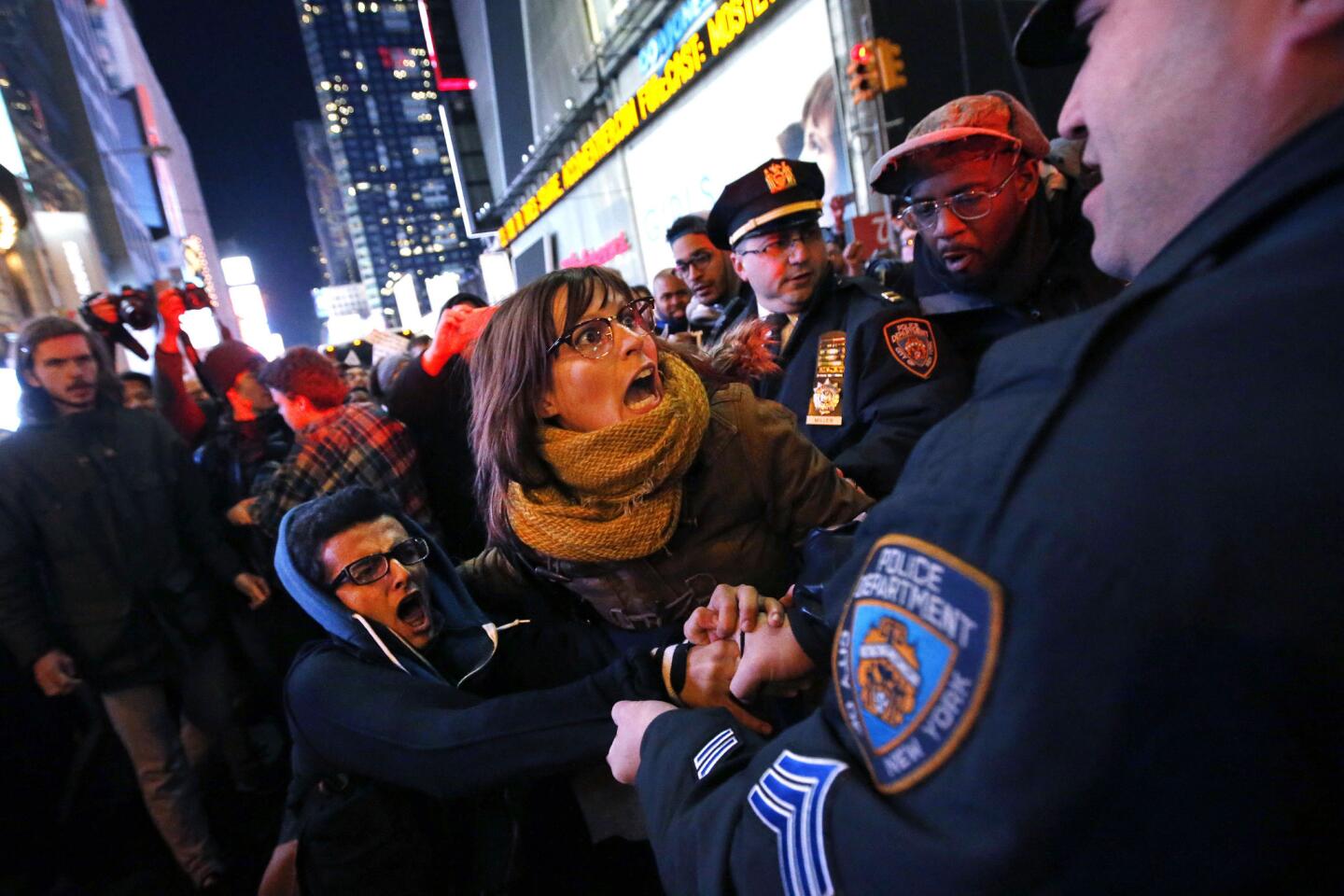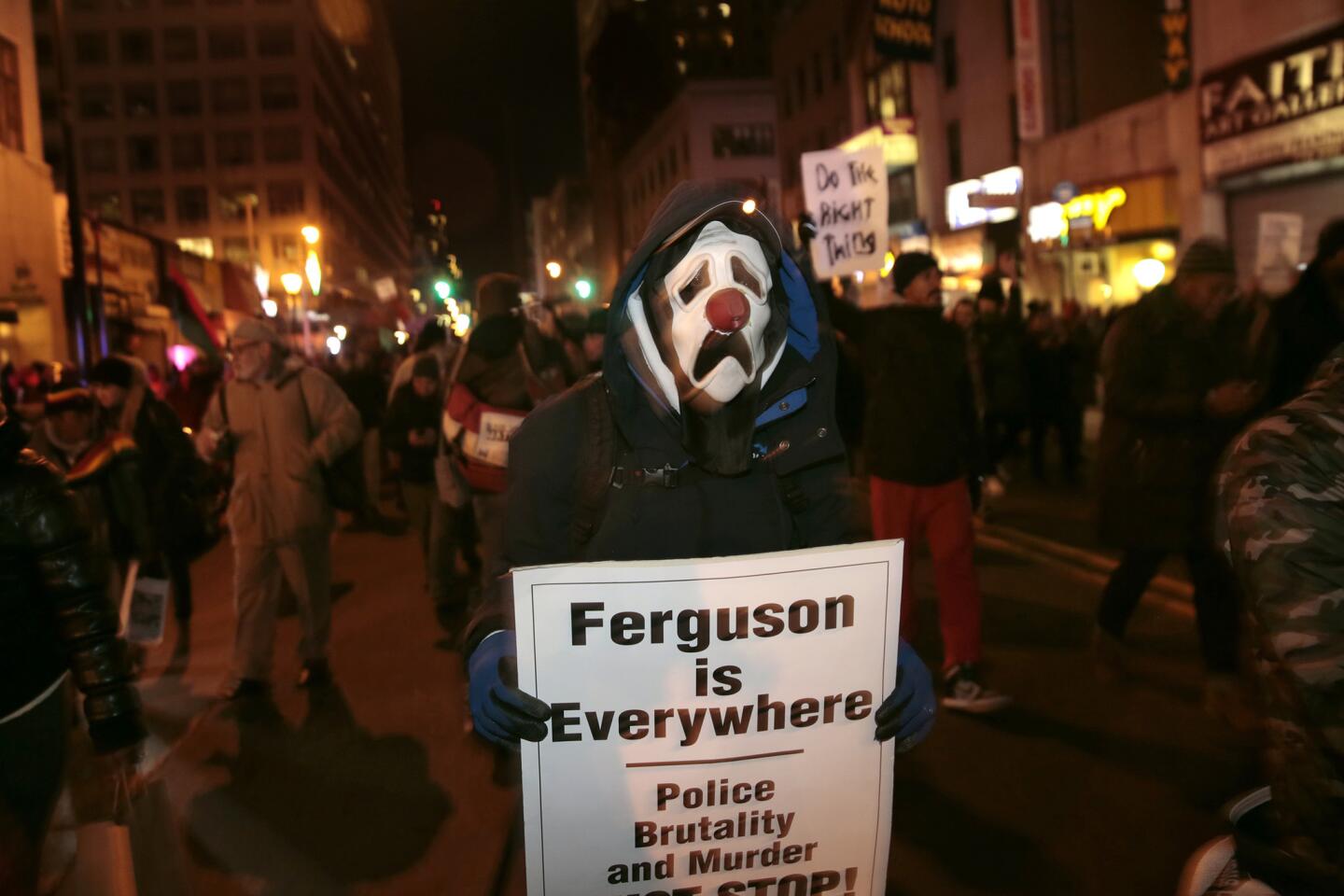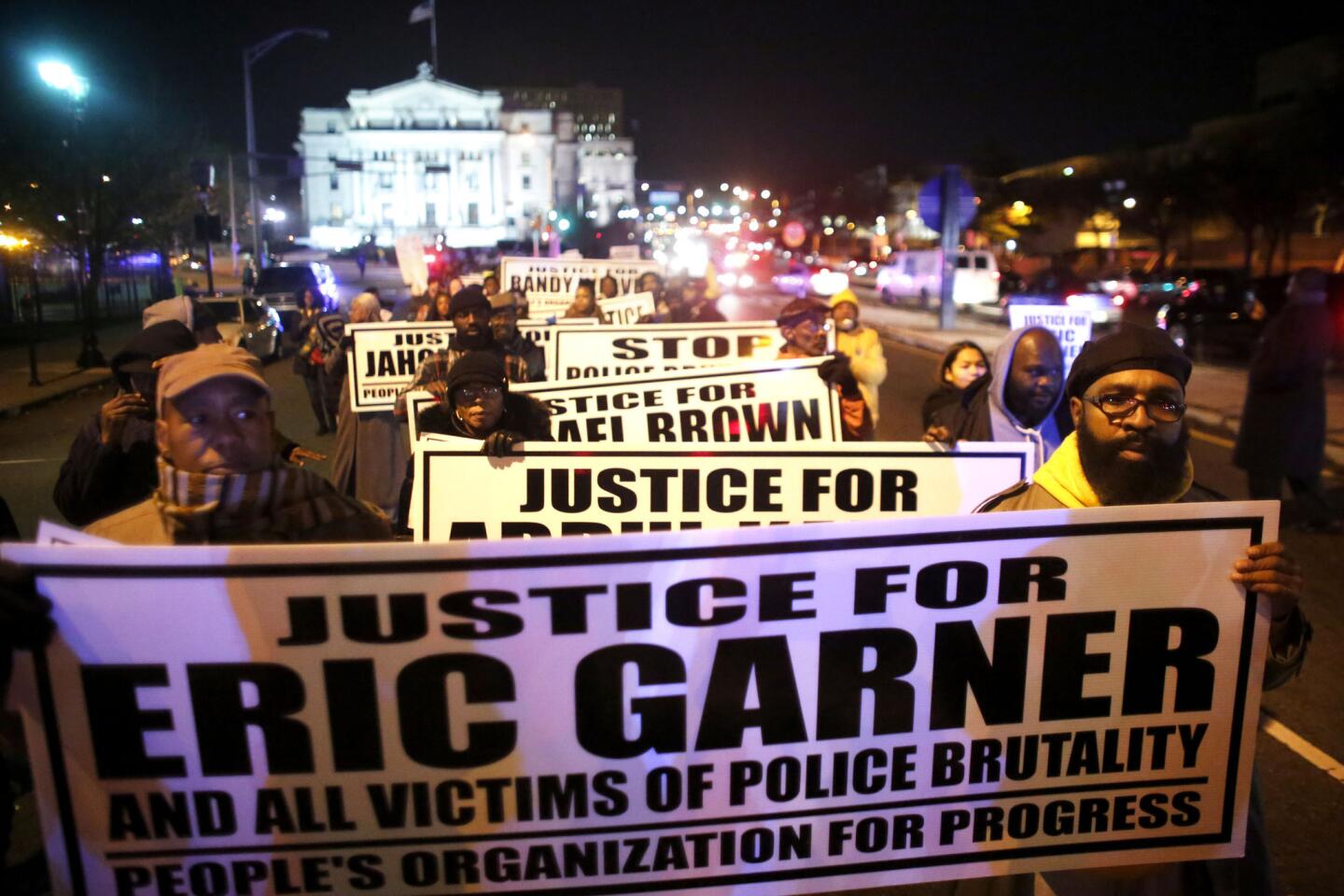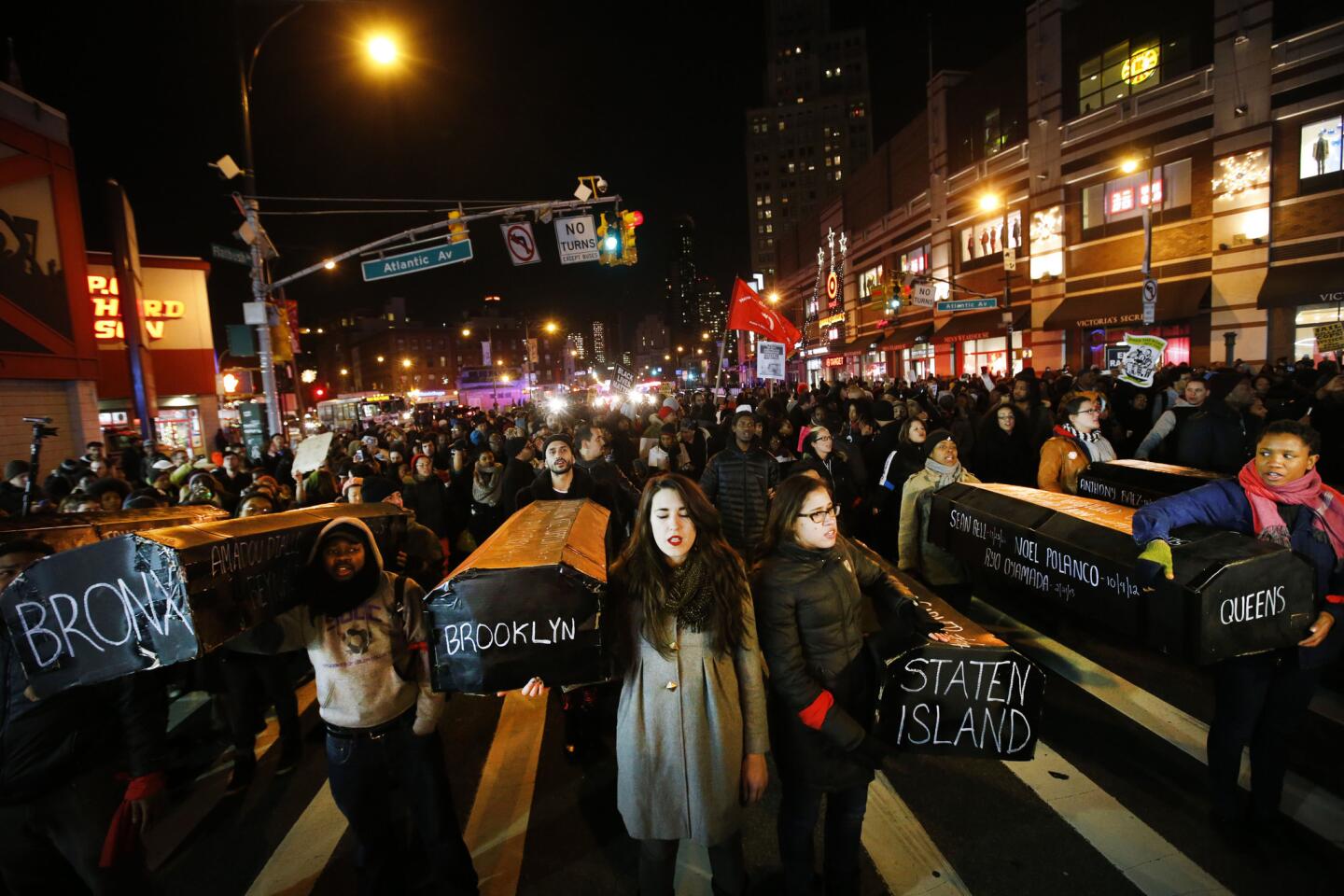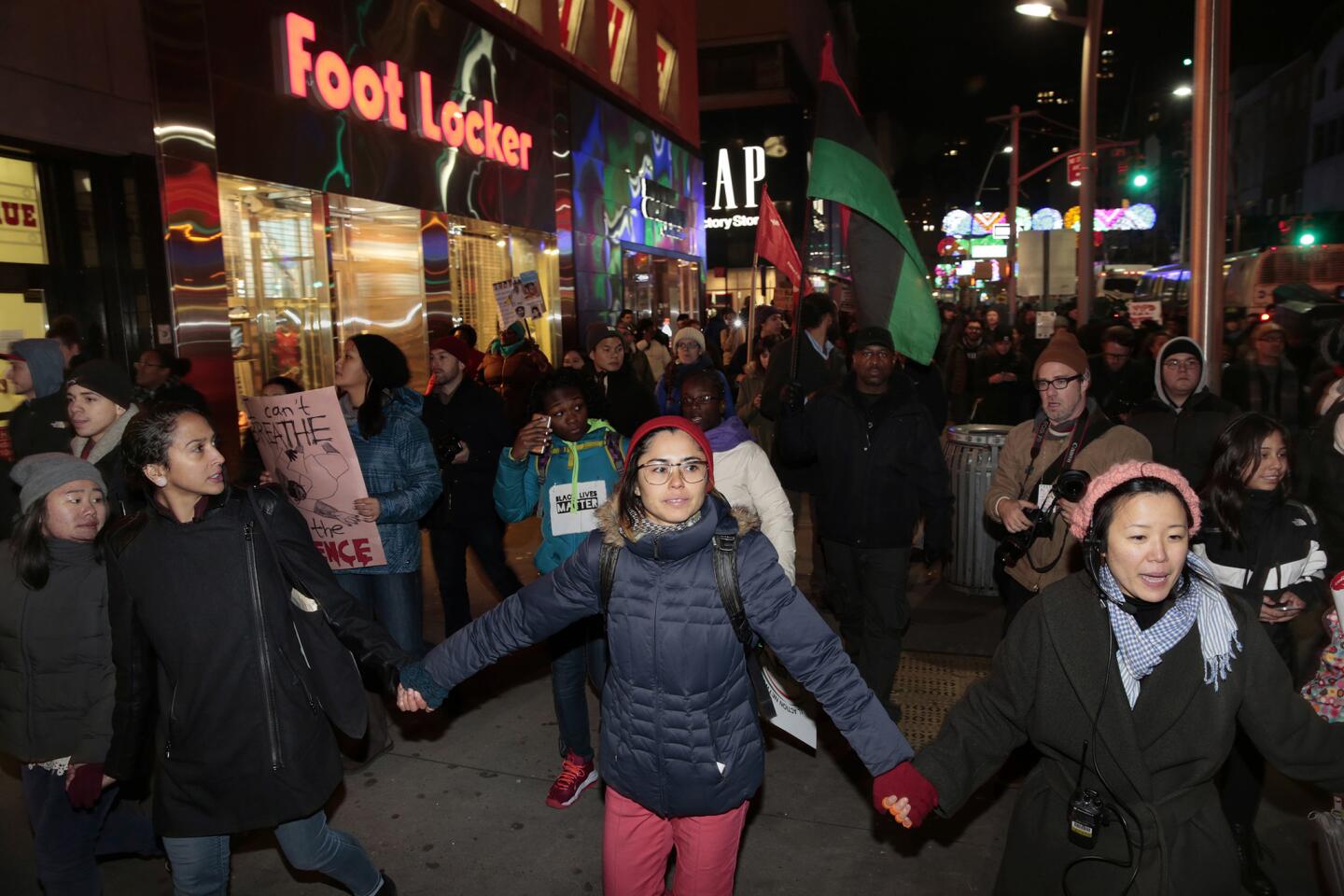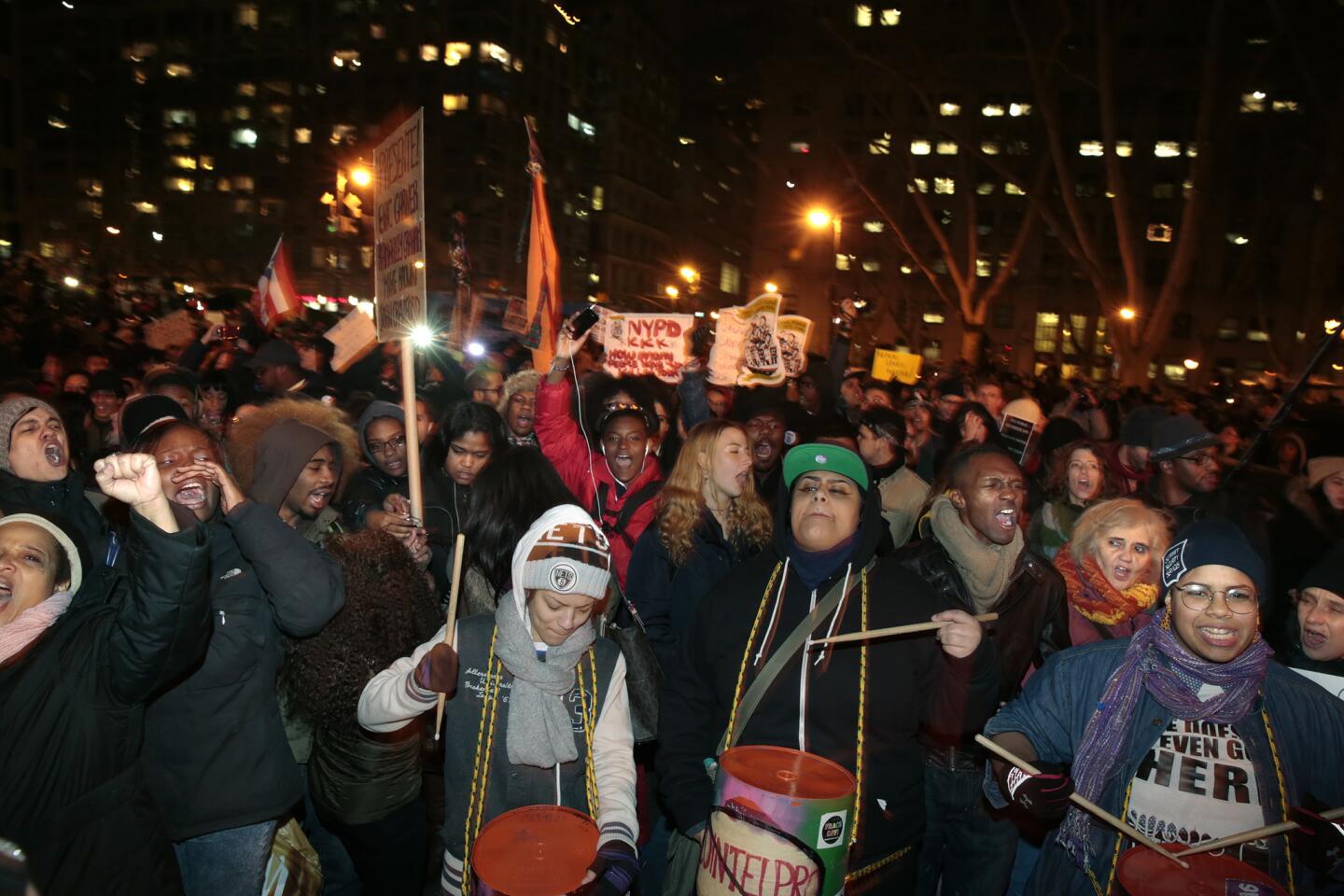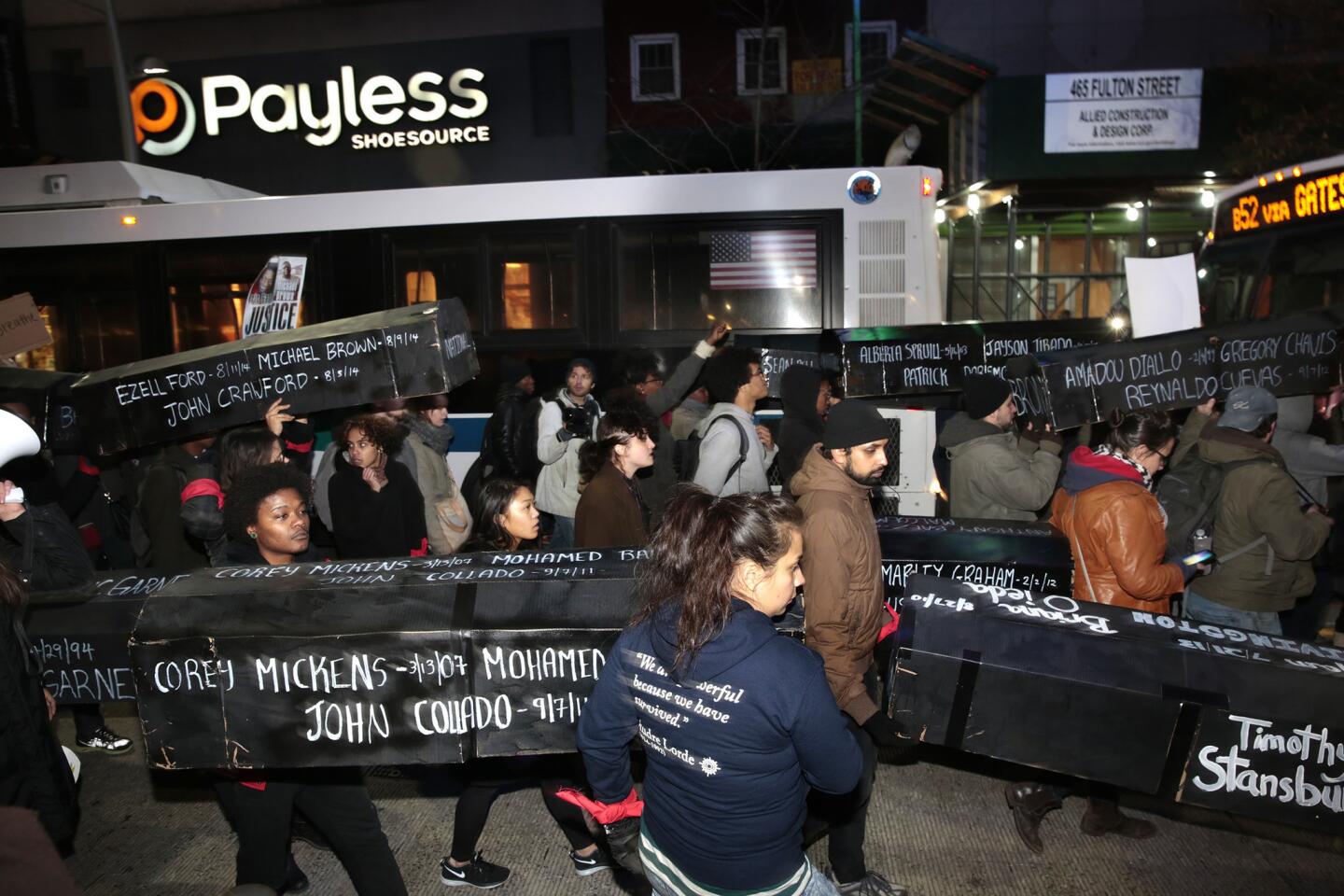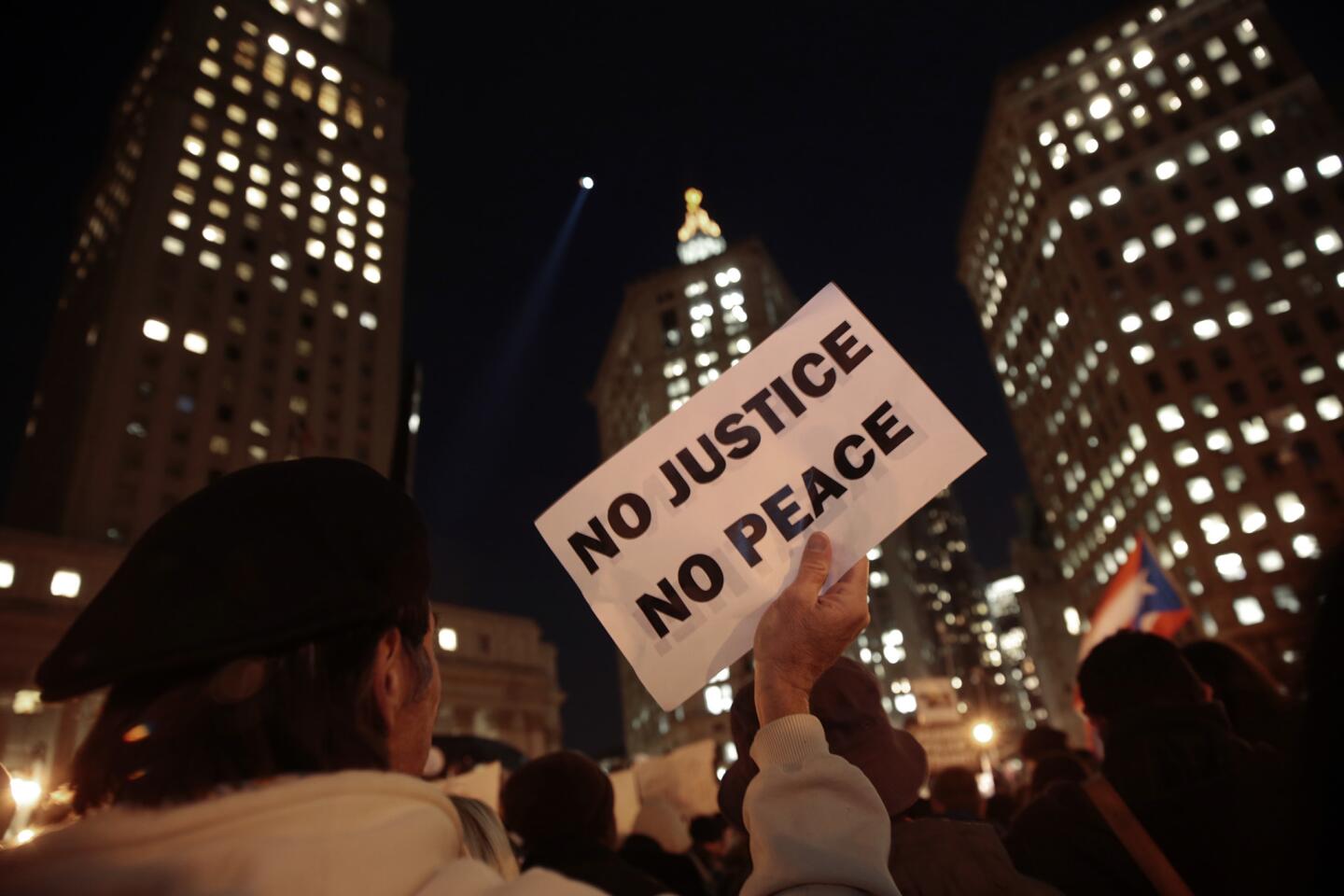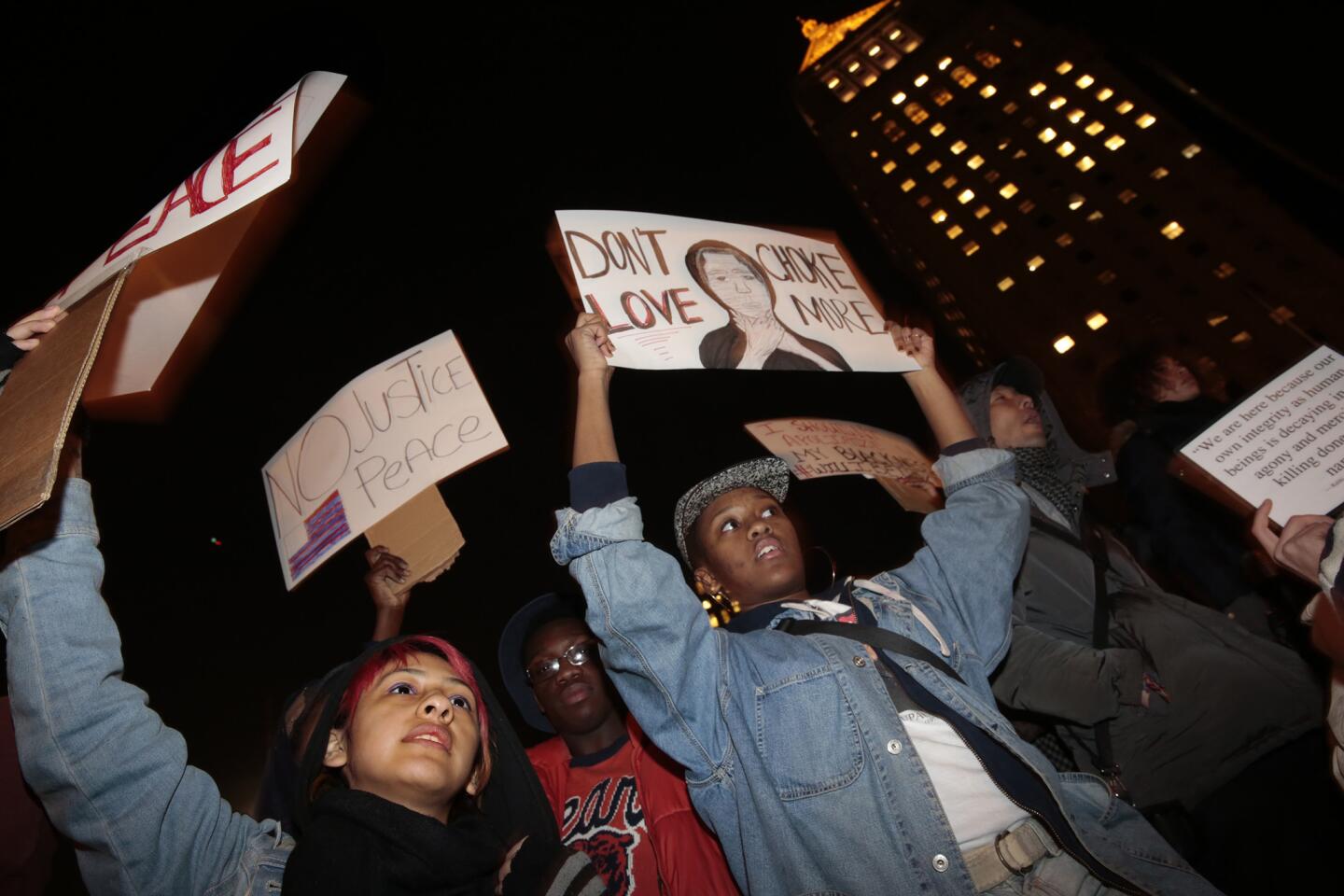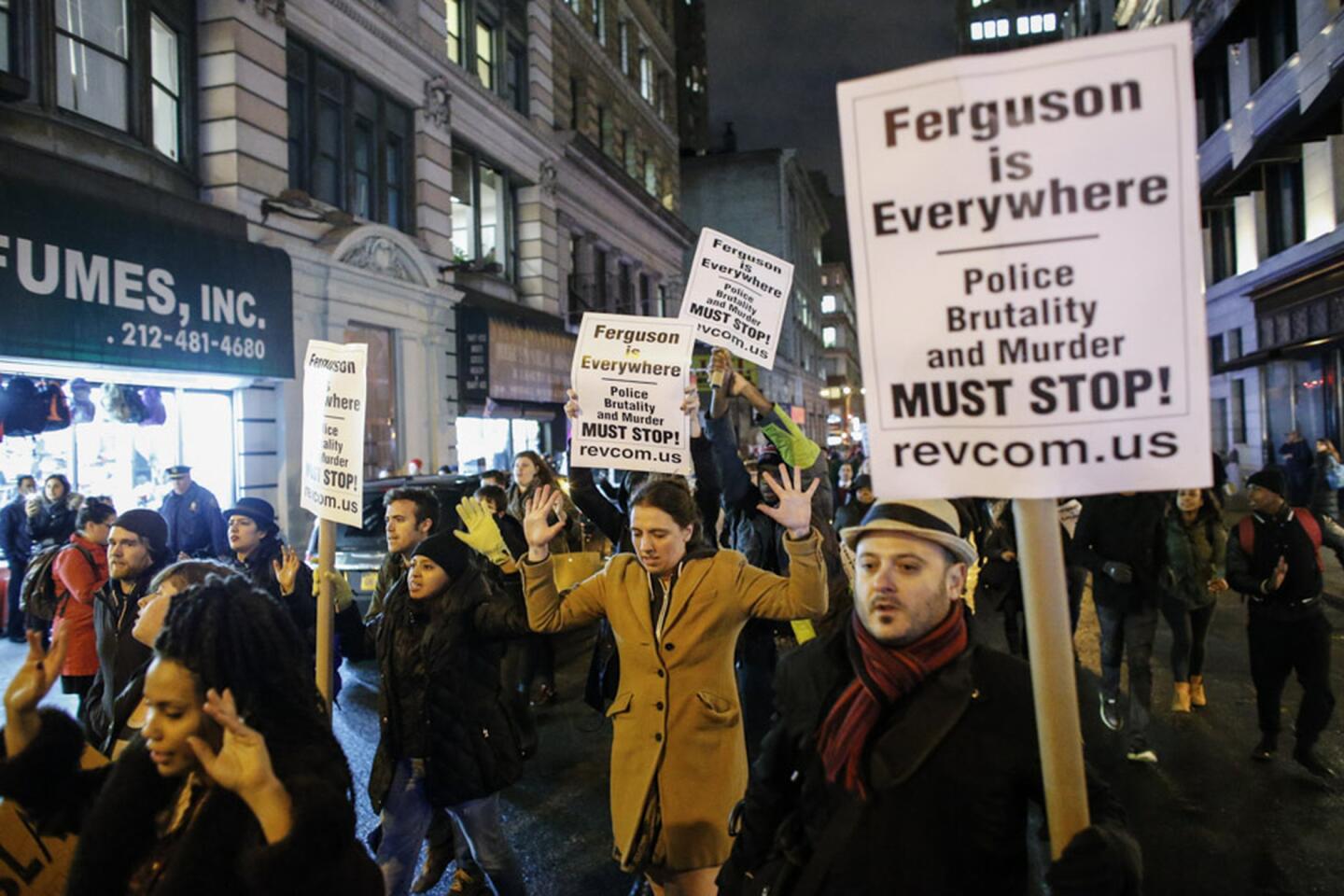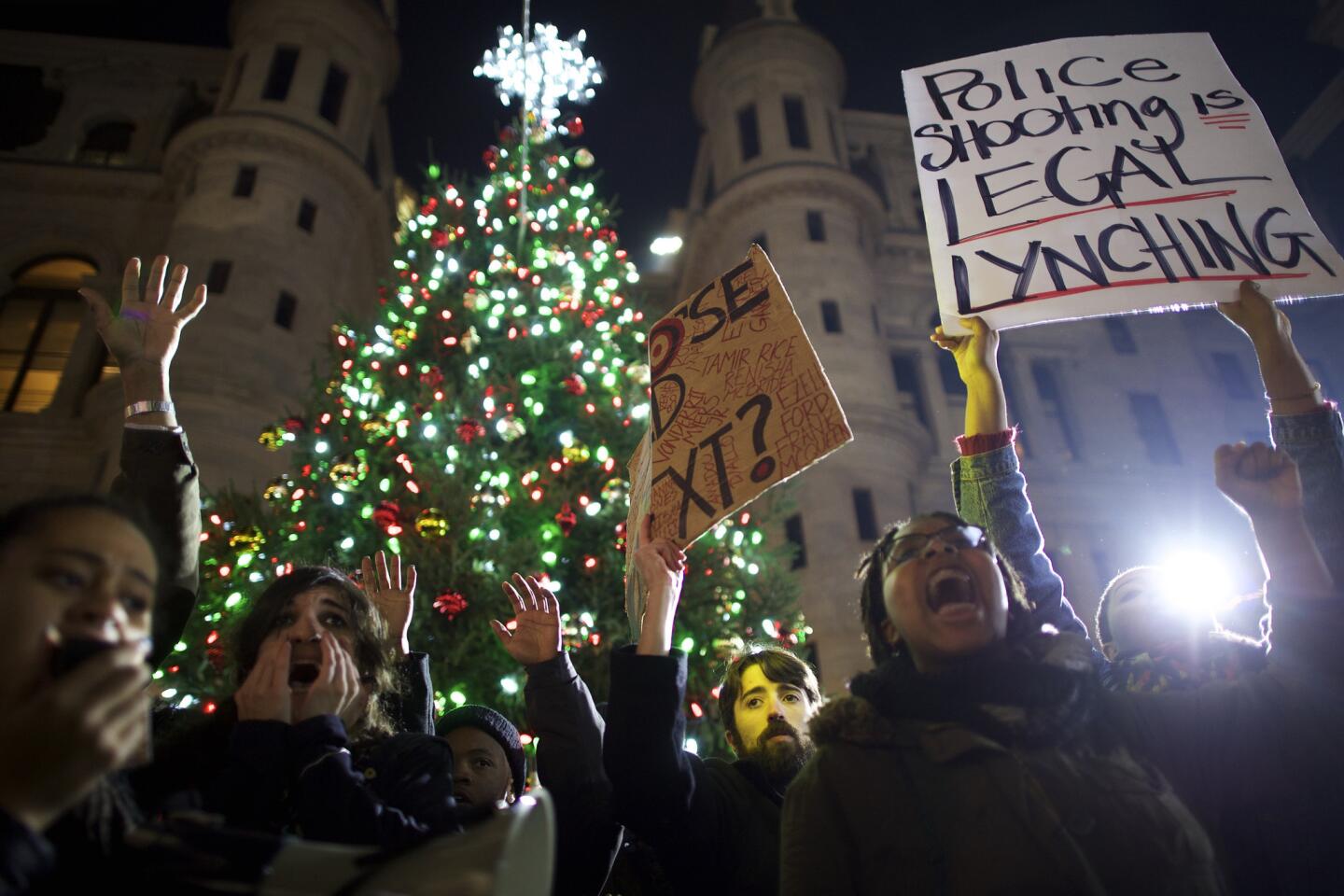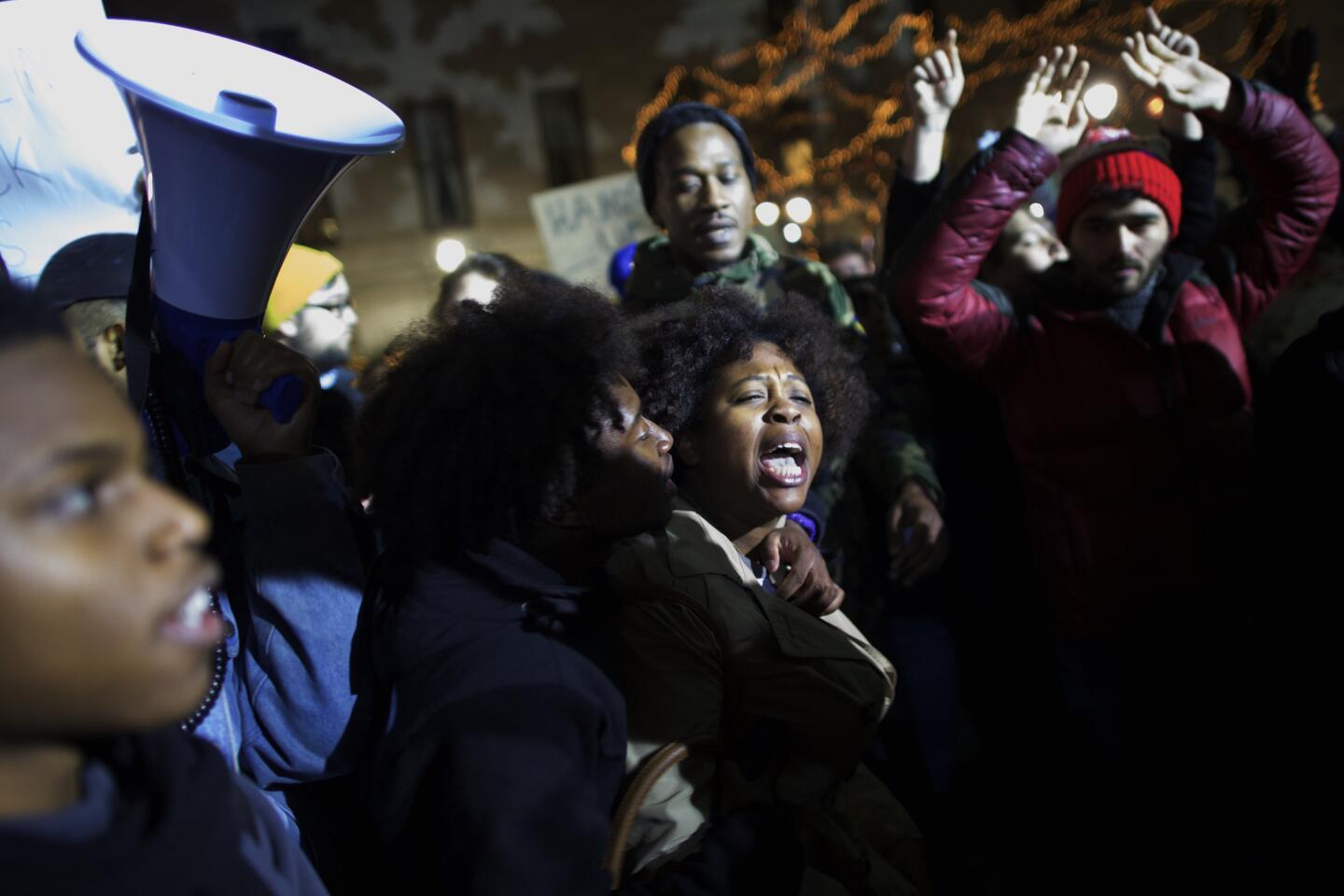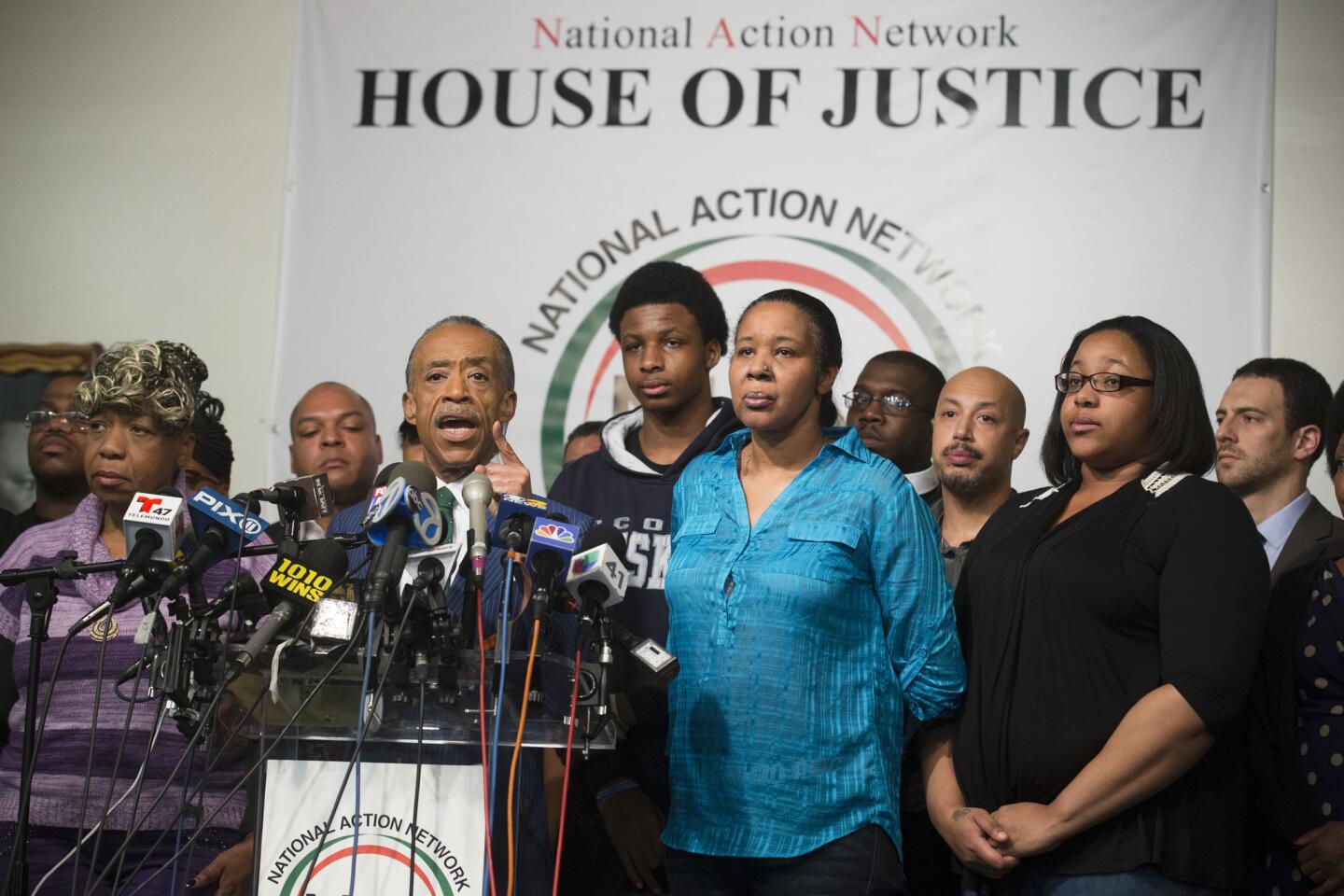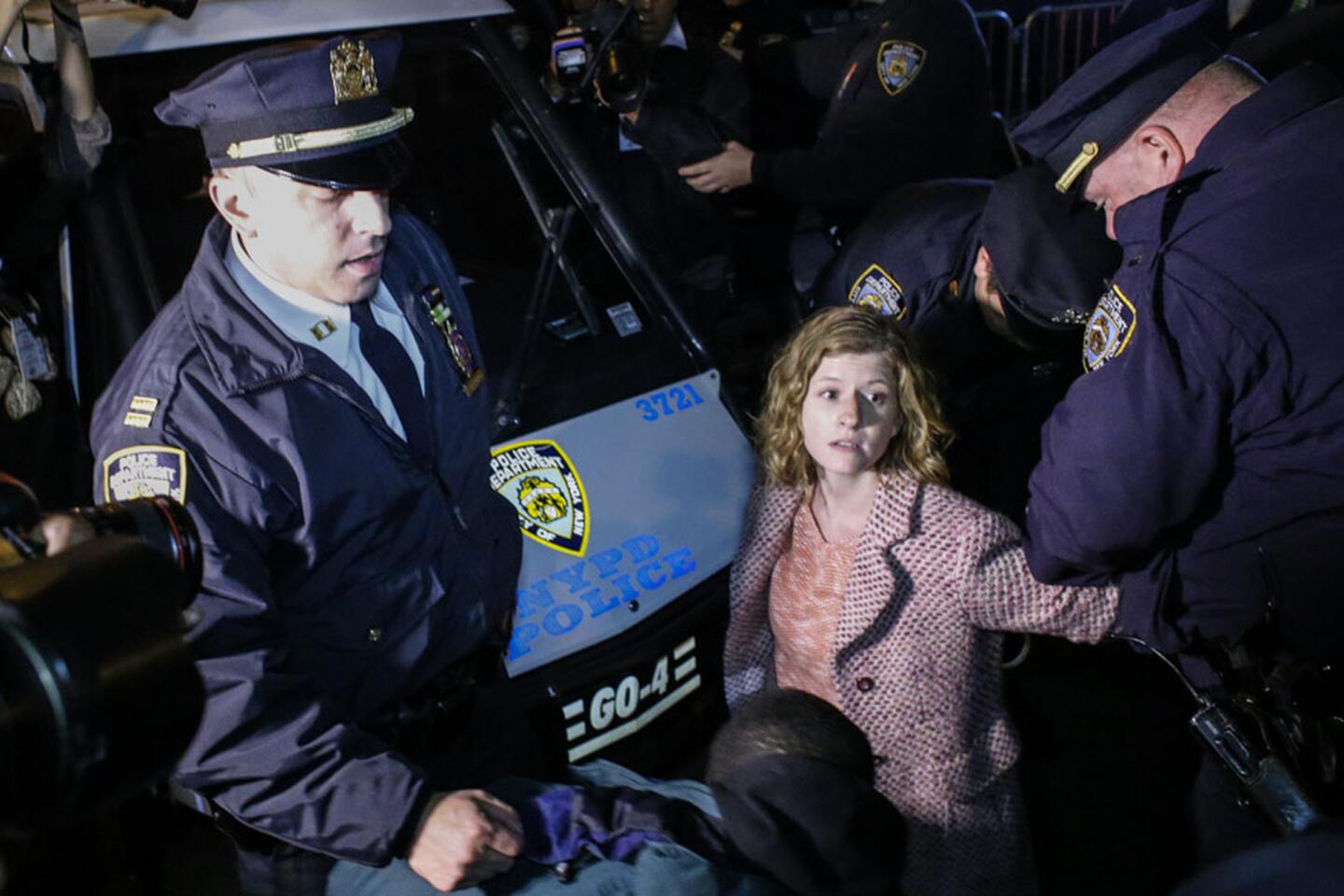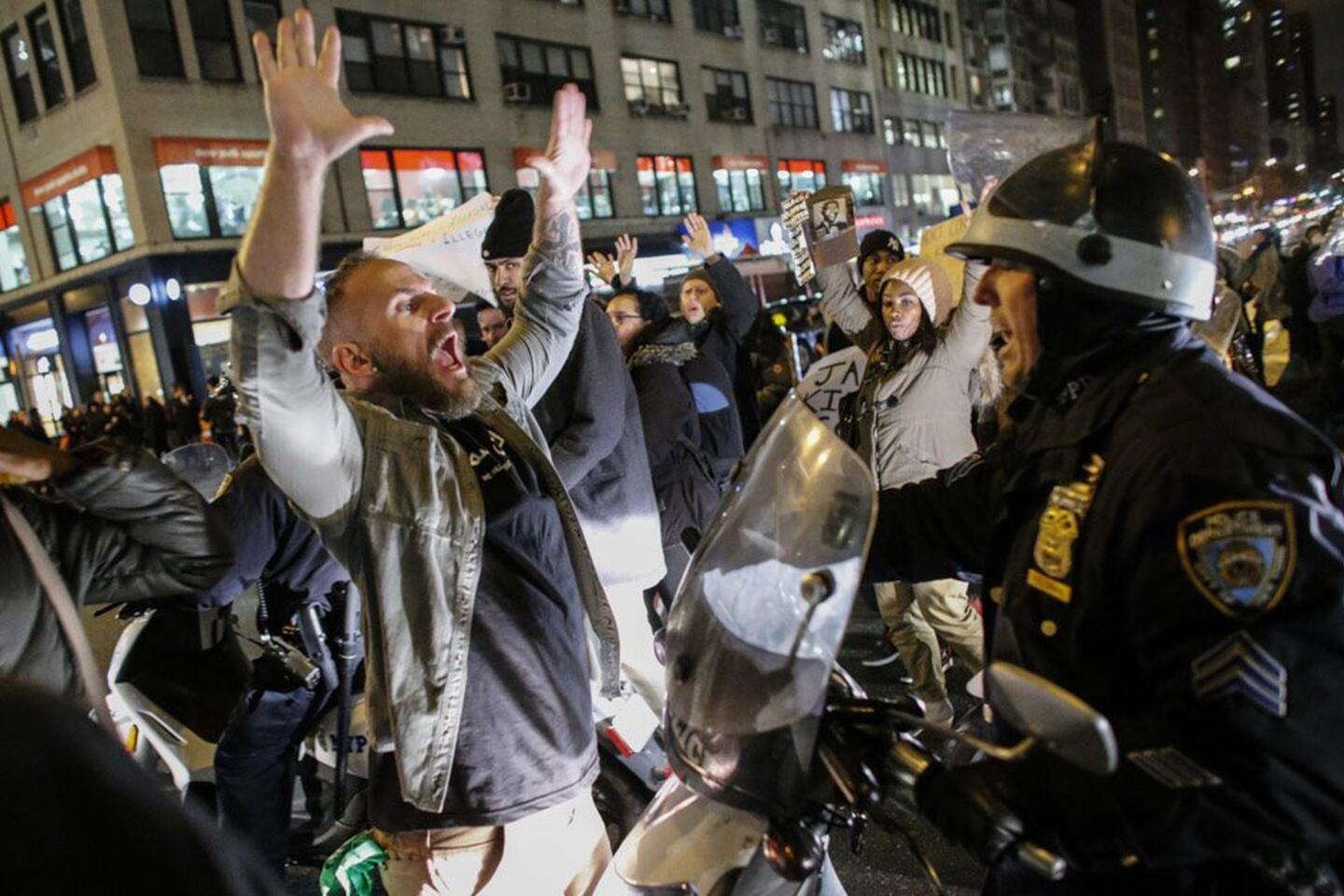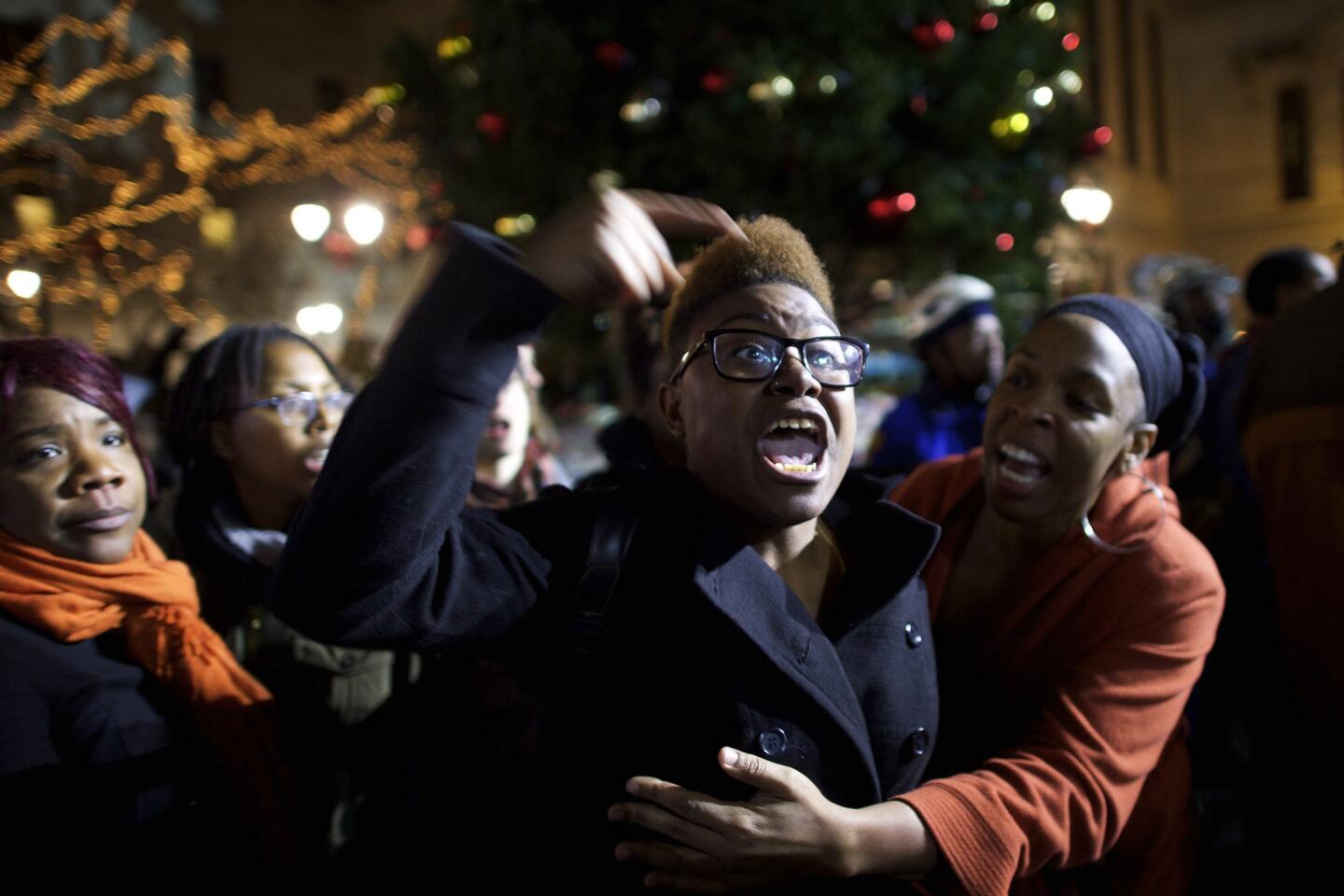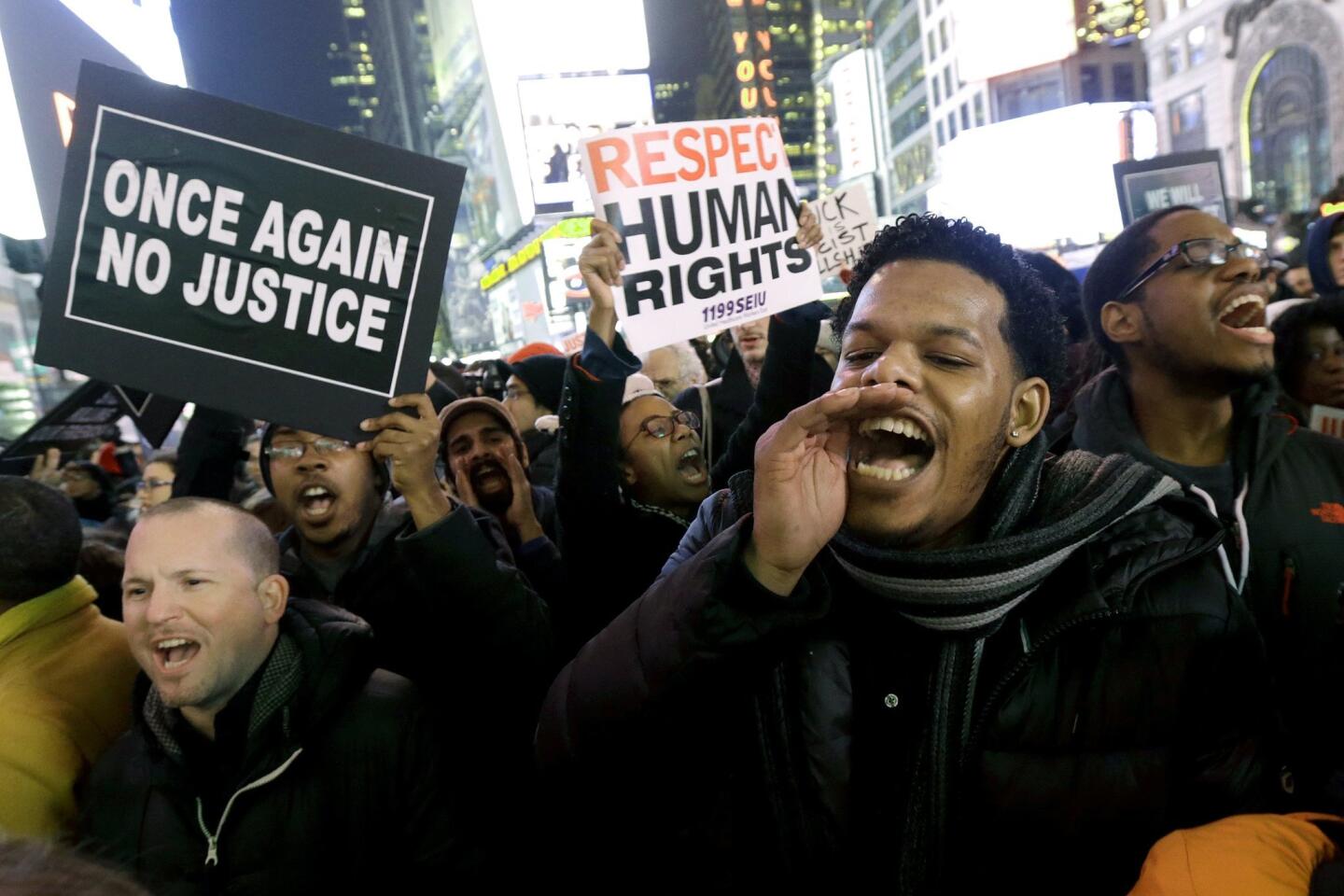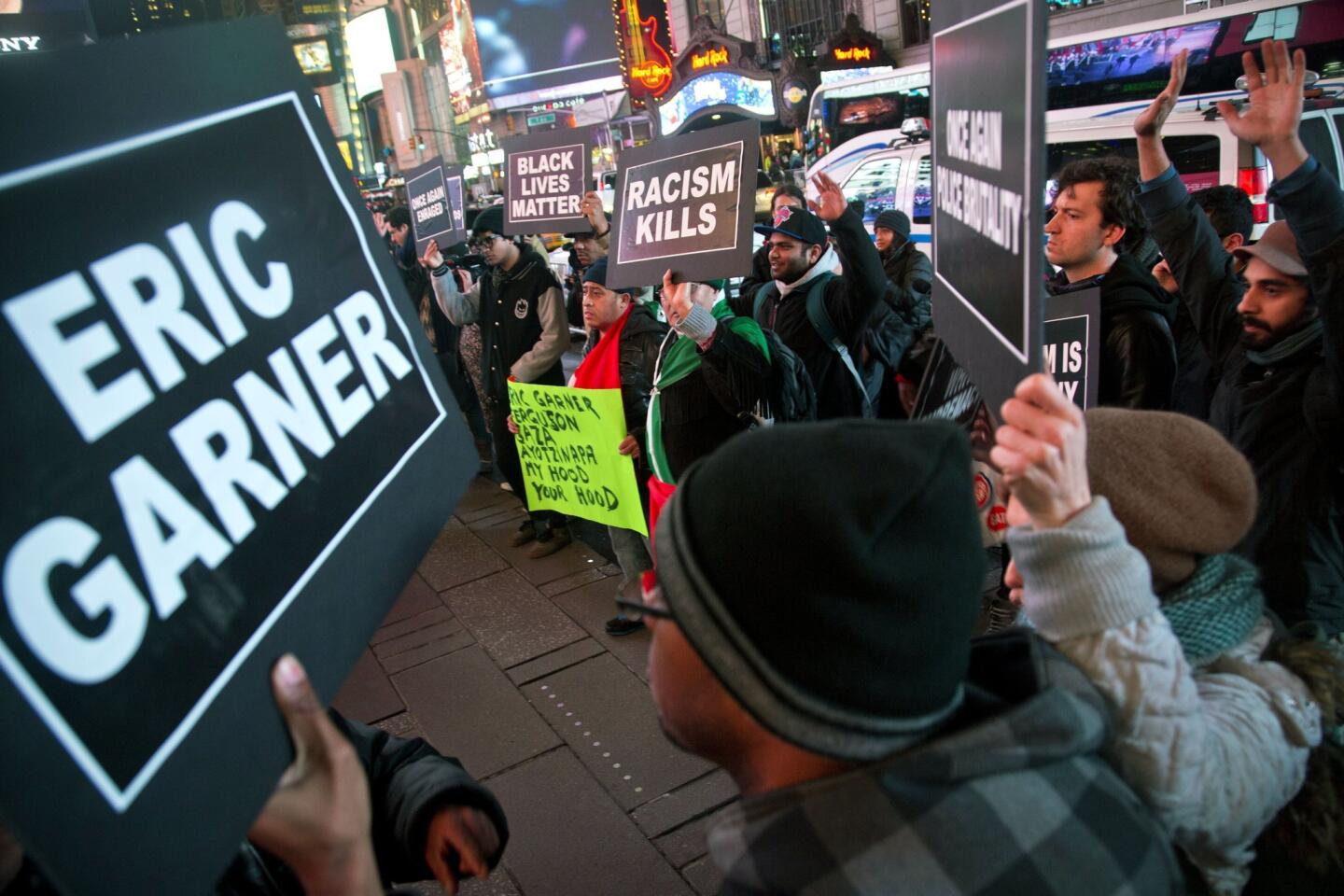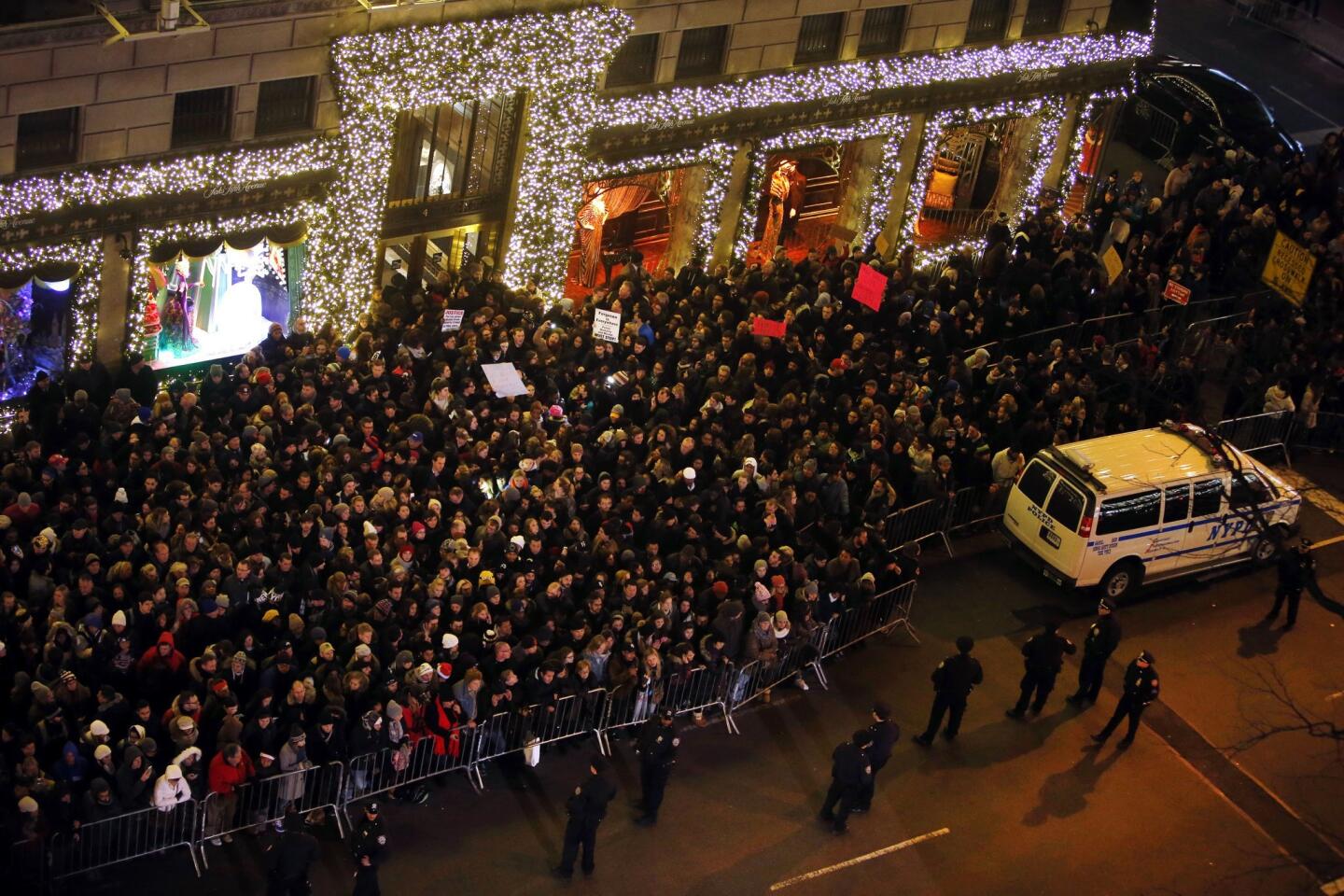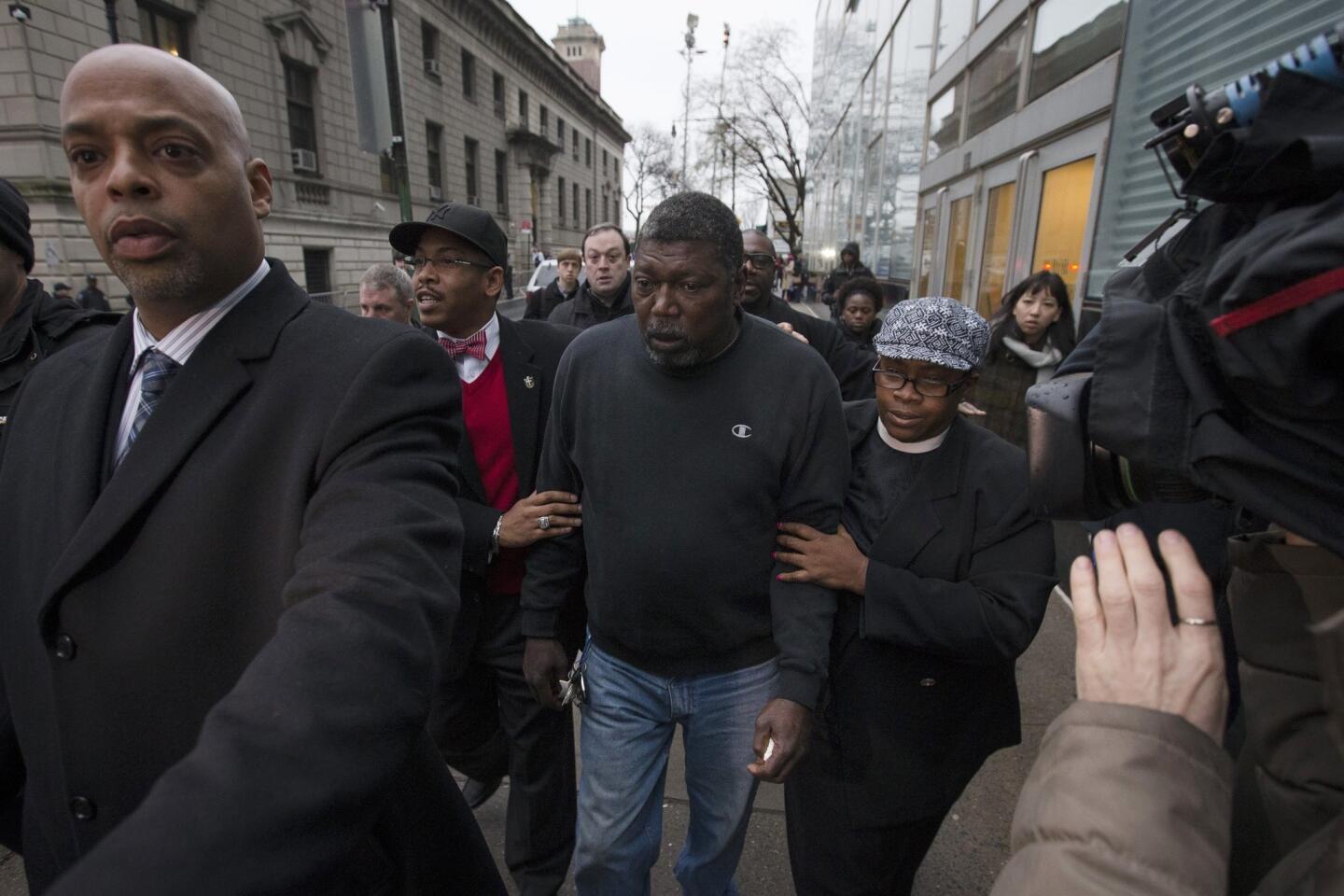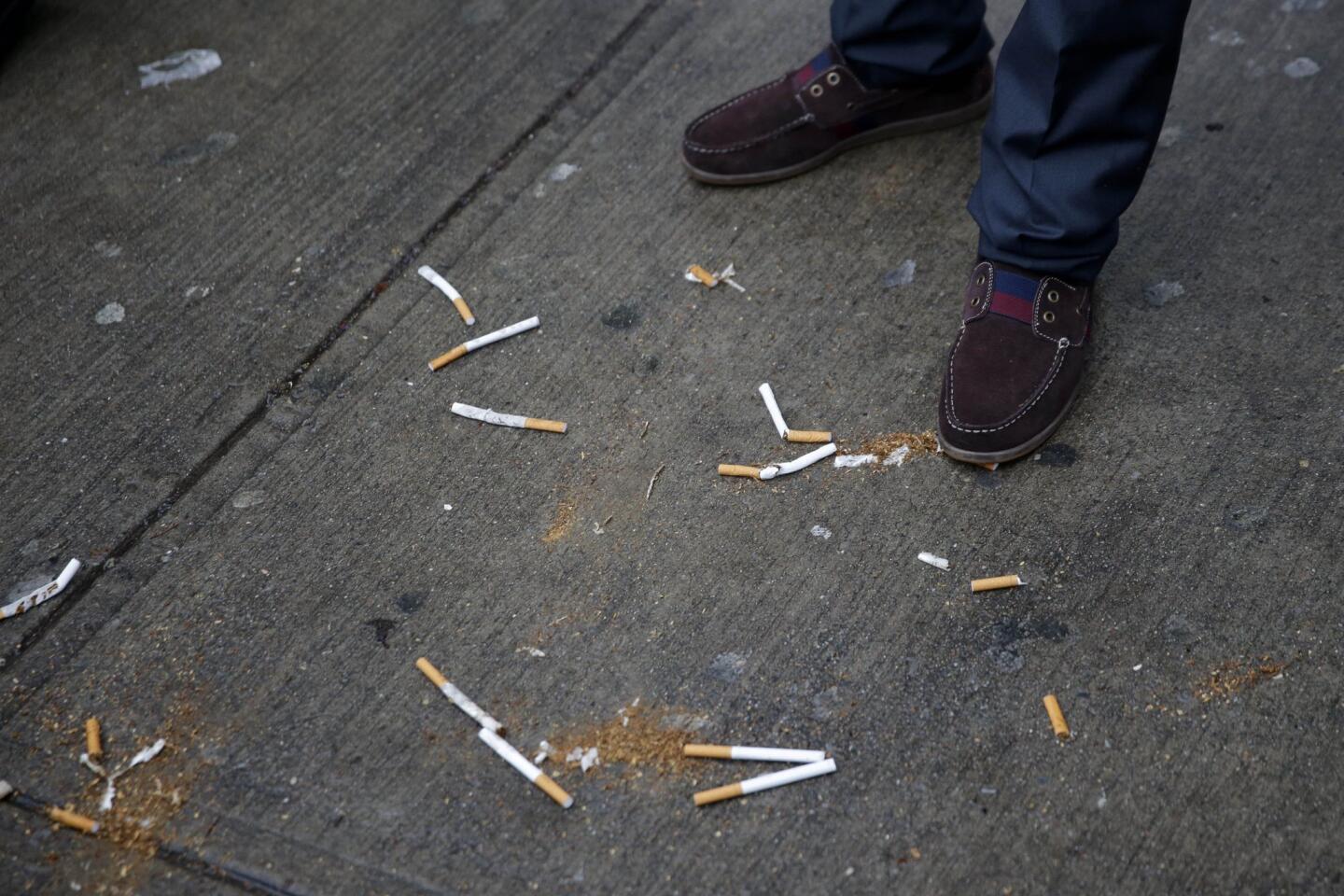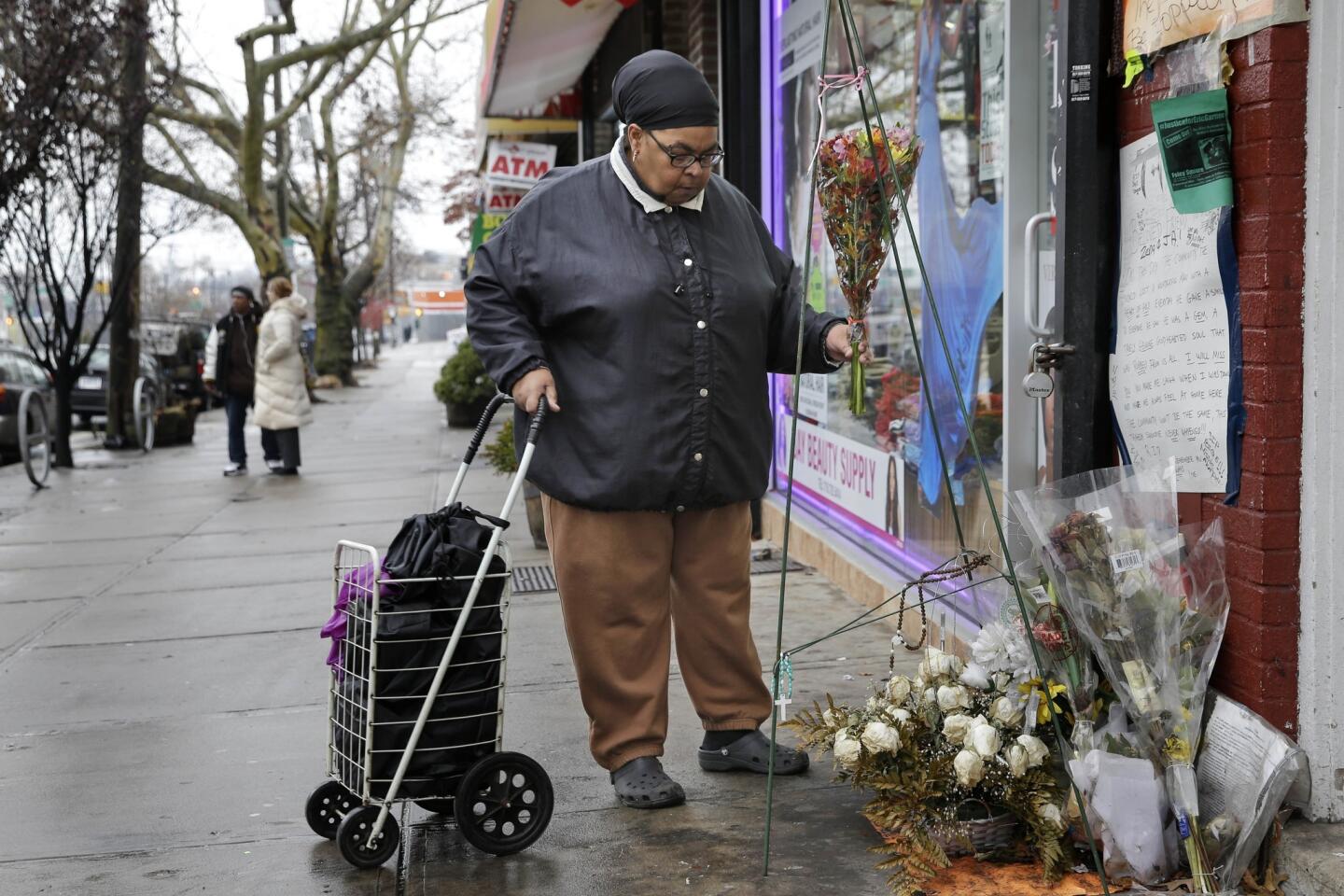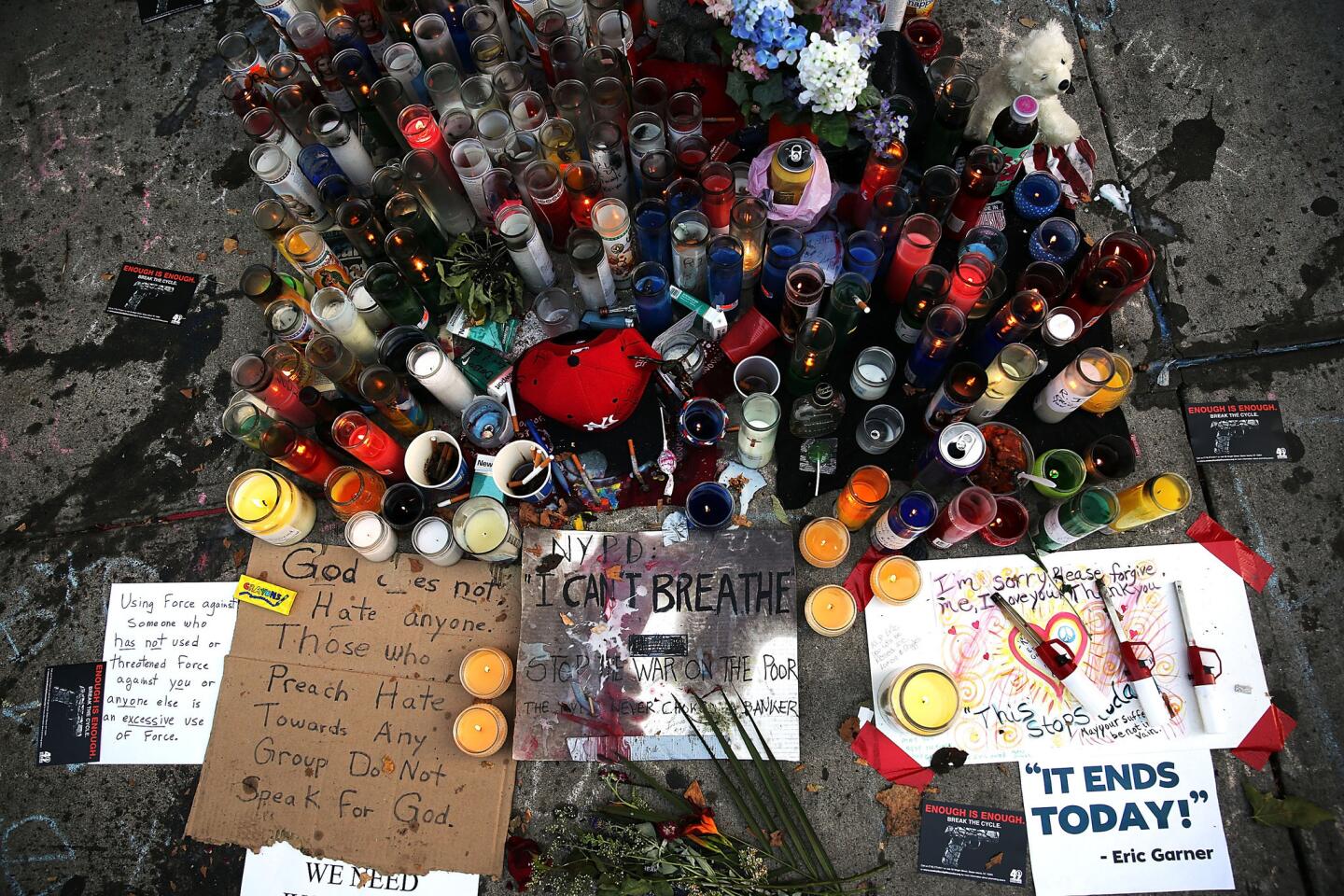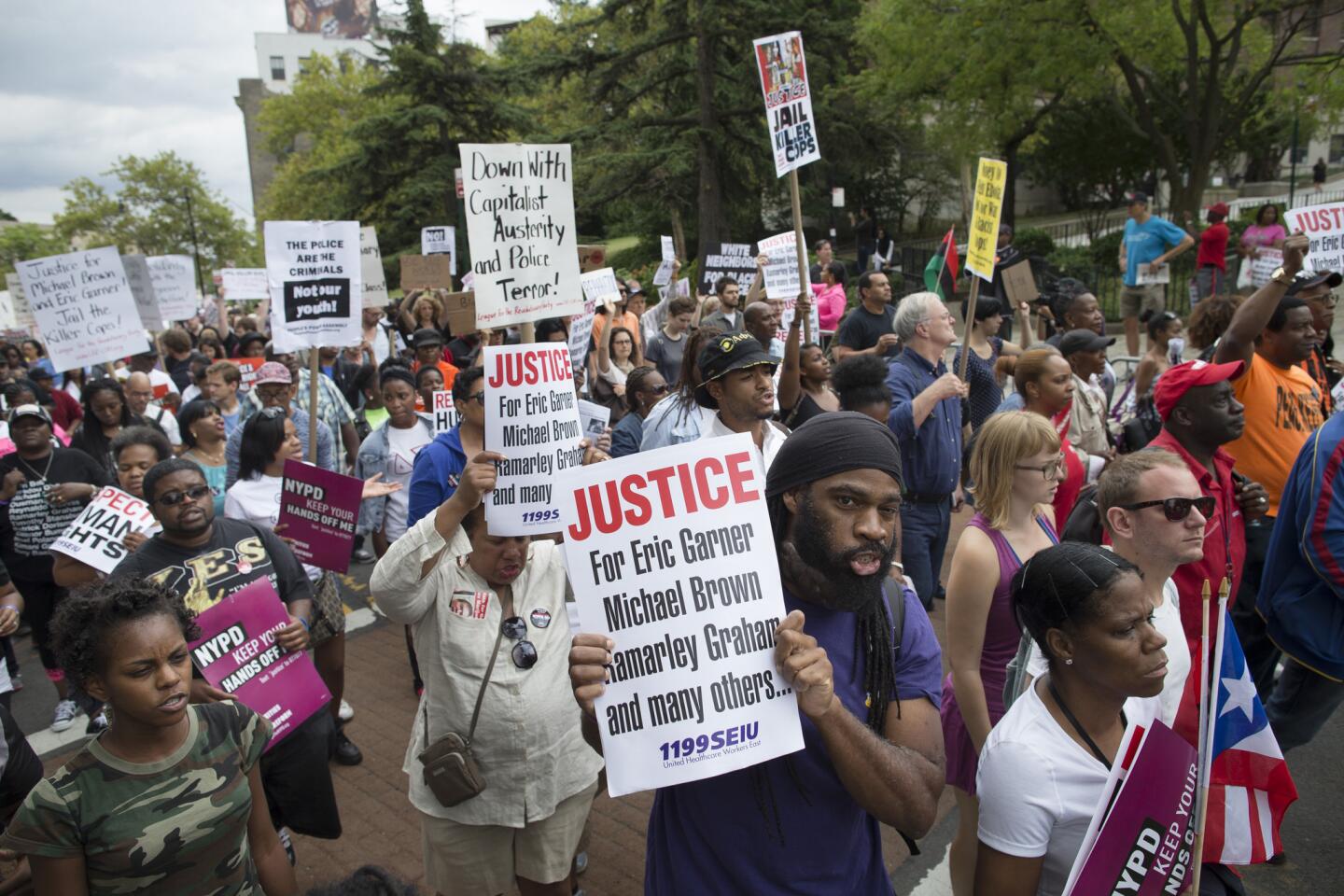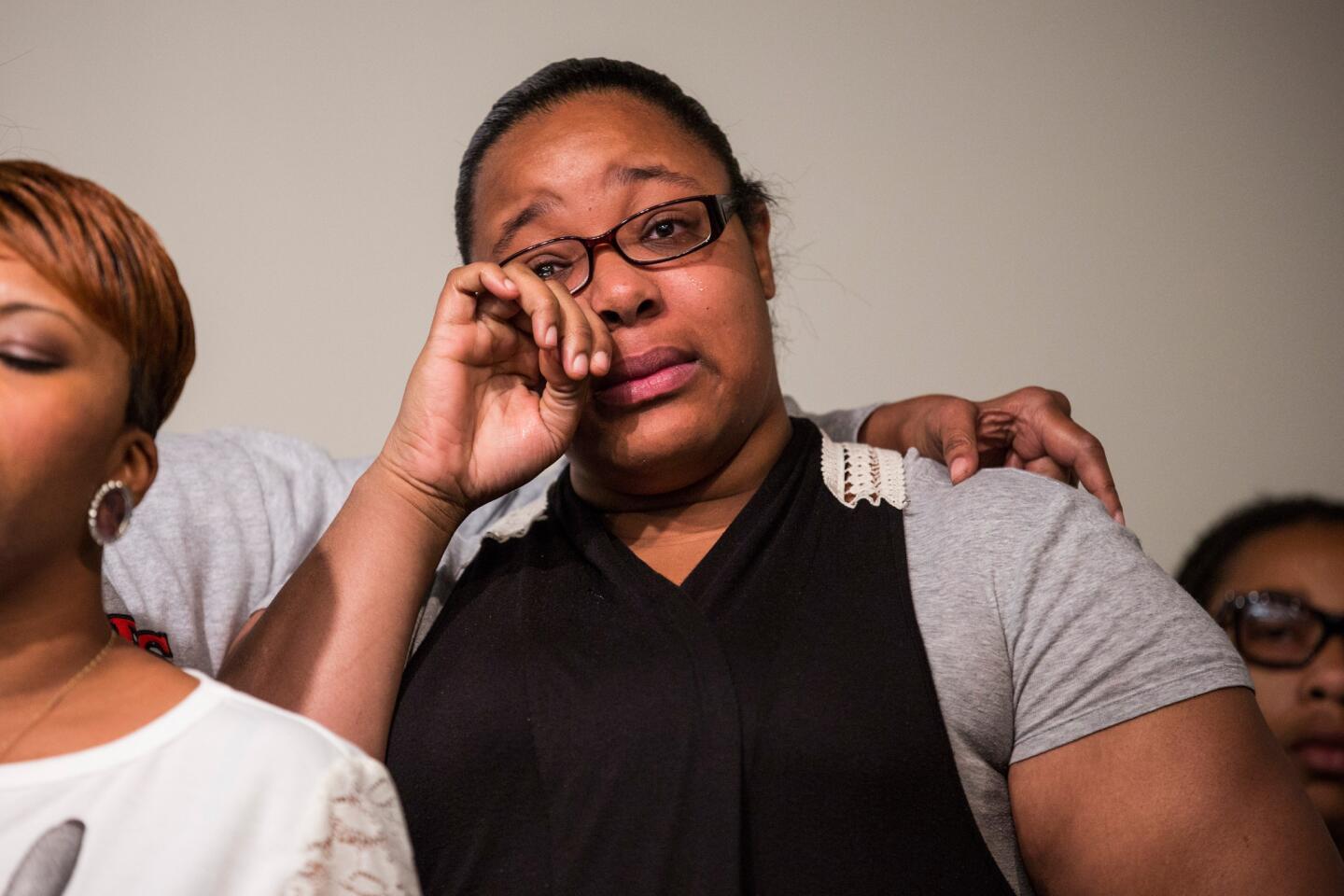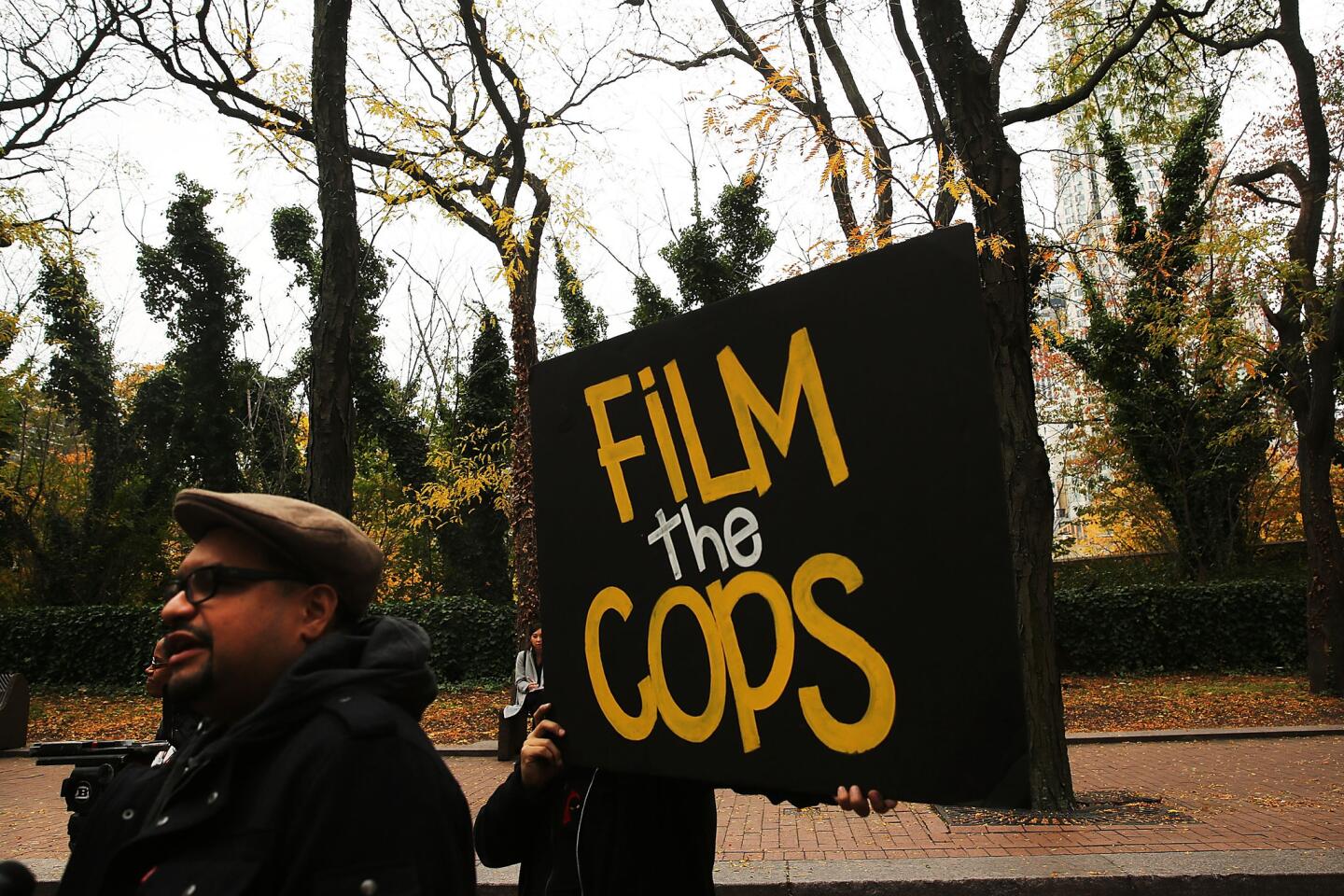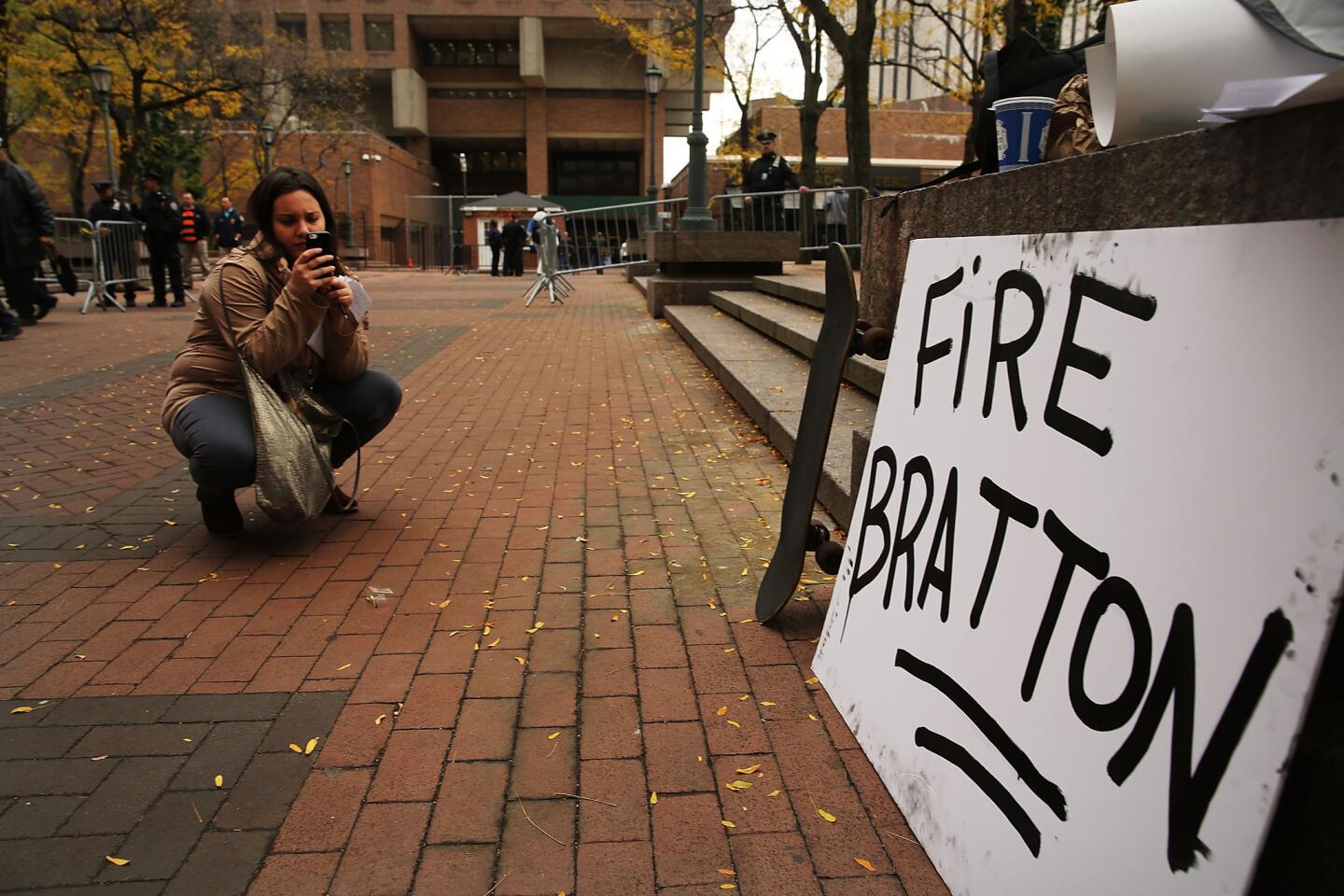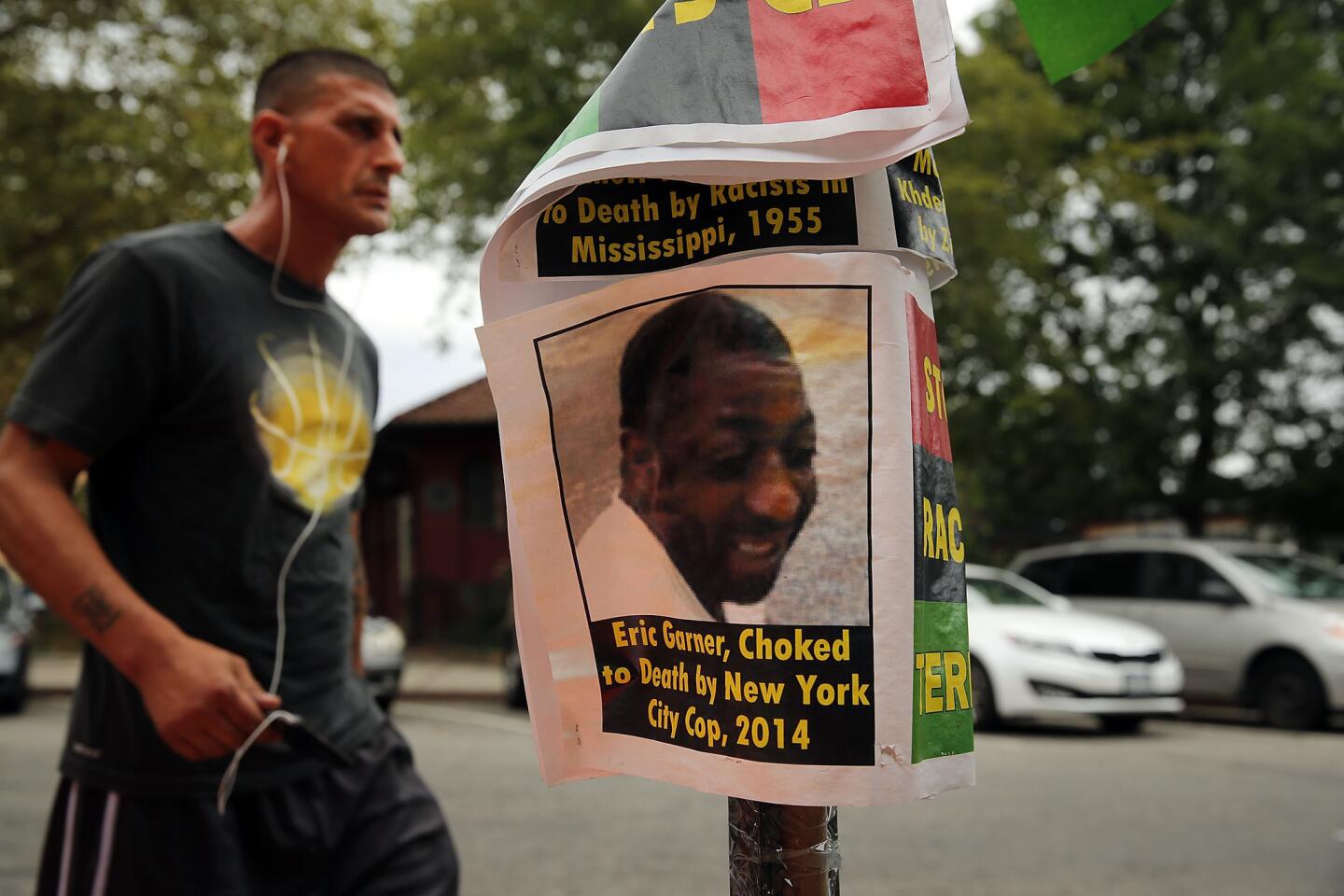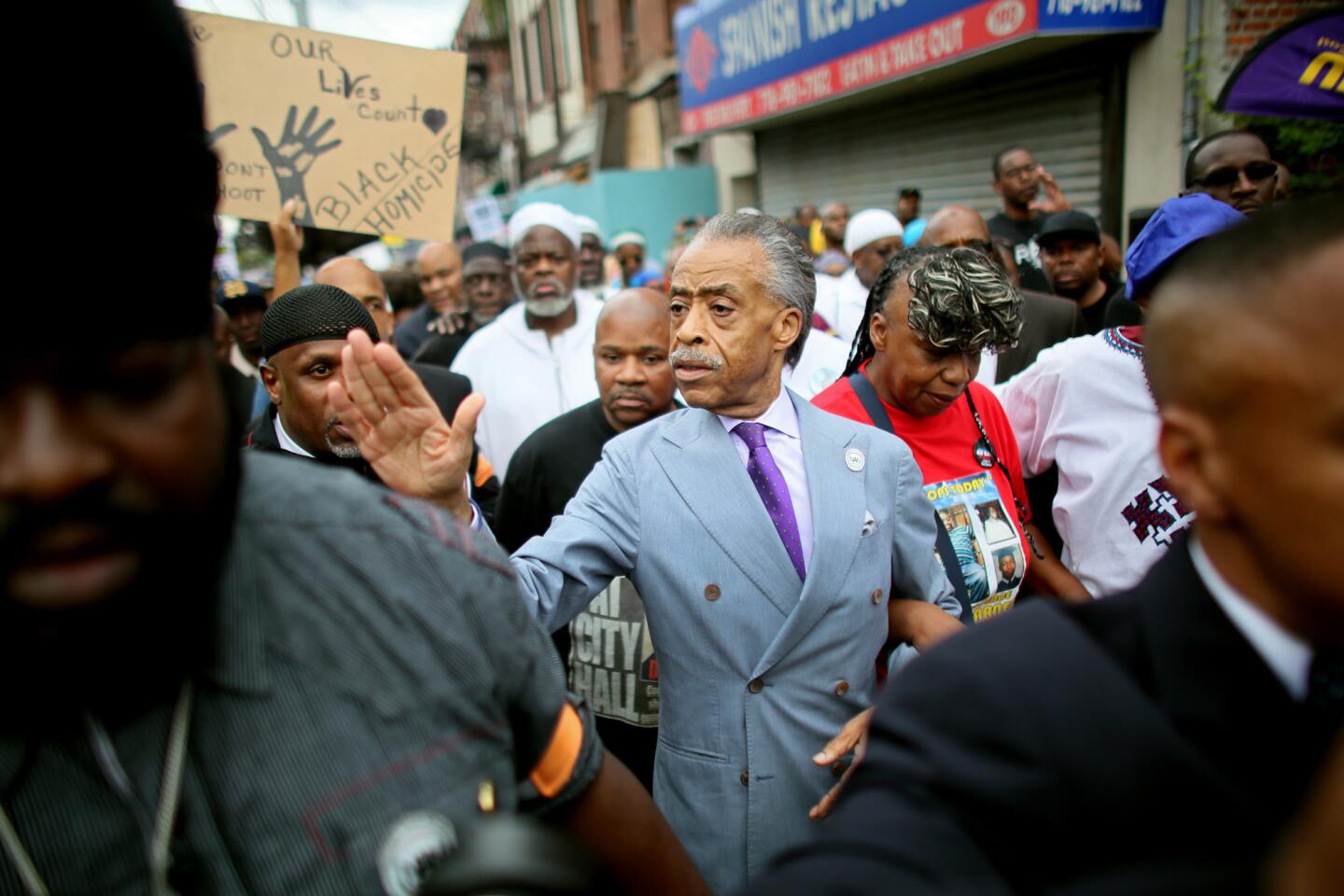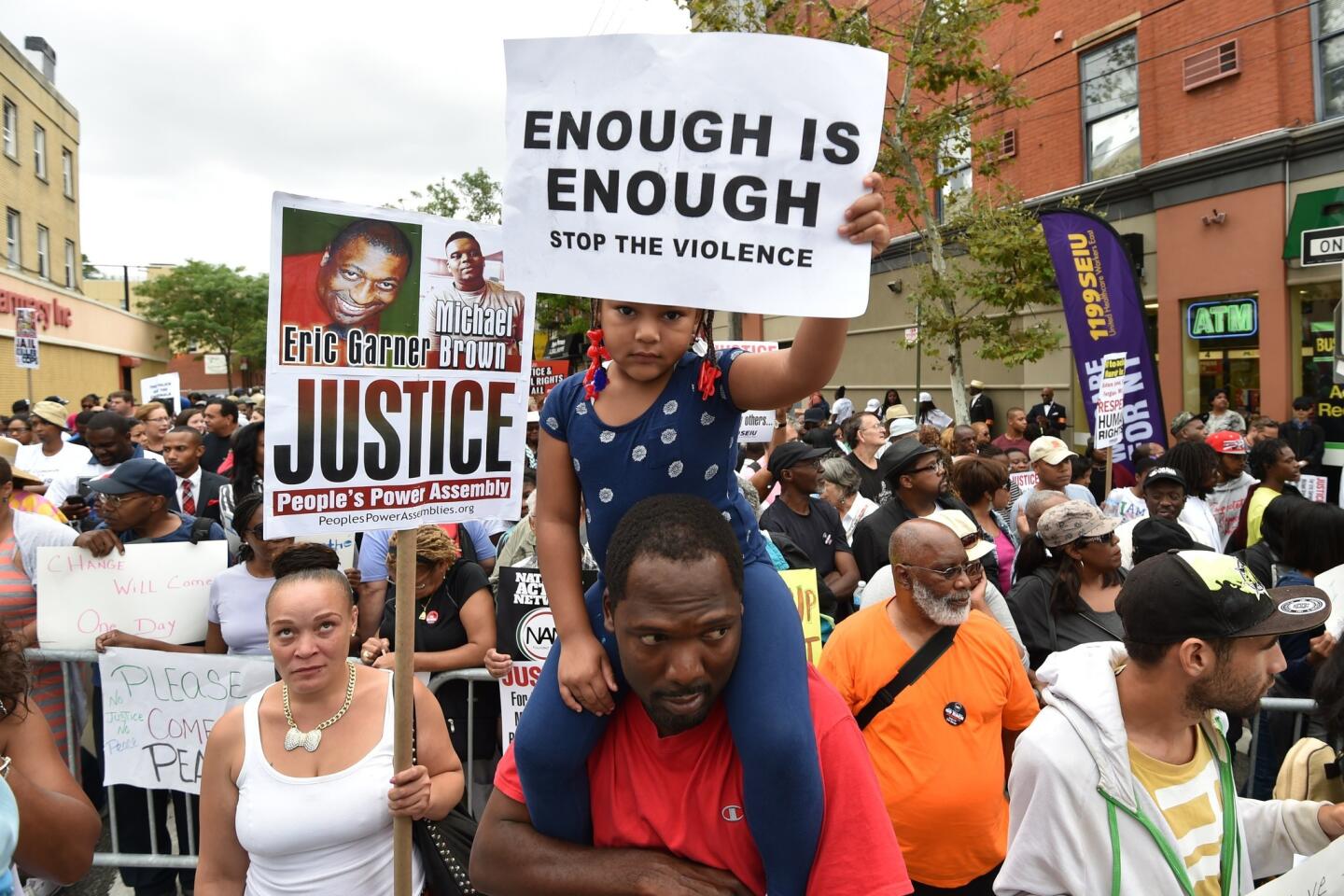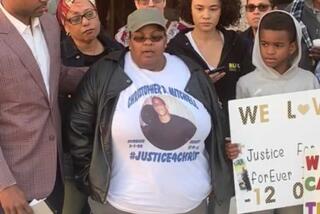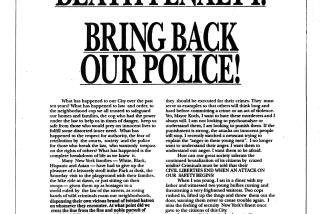New York grand jury decides not to indict police officer in chokehold death
- Share via
Reporting from New York — A New York grand jury Wednesday opted not to indict a white policeman in the killing of Eric Garner, an unarmed black man whose last words — “I can’t breathe” — became a rallying cry for protesters who blamed his death on racial profiling and police abuse.
The decision, coming nine days after a Missouri grand jury declined to charge a white officer in the death of Michael Brown, drew swift reactions that reflected the passions that have increasingly surrounded such cases across the country.
New York Mayor Bill de Blasio, Gov. Andrew Cuomo and other officials, anxious to avoid the violence that erupted in Ferguson after Officer Darren Wilson walked free, urged calm as activists called for demonstrators to converge at Times Square, Rockefeller Center and other landmarks.
De Blasio, whose wife is black, invoked their teenage son, Dante, and said his heart went out to Garner’s family.
“This is a subject that is never far from my family’s minds,” De Blasio said. “I’ve had to talk to Dante for years about the dangers he may face” and the special care he should take in his interactions with police.
President Obama said the case “speaks to the larger issues that we’ve been talking about now for the last week, the last month, the last year and, sadly, for decades, and that is the concern on the part of too many minority communities that law enforcement is not working with them and dealing with them in a fair way.”
“It’s time for us to make more progress than we’ve made,” Obama said. “I’m not interested in talk; I’m interested in action.”
Garner, a 43-year-old father of six, died July 17 during an altercation that began when several police officers tried to arrest him on suspicion of selling illegal cigarettes on a Staten Island sidewalk. An onlooker’s video showed one officer, Daniel Pantaleo, locking his arm around Garner’s neck in what appeared to be a chokehold.
“I can’t breathe,” Garner gasped several times as other officers piled on him.
The medical examiner ruled his death a homicide due to compression of the neck and chest, but the 23-member grand jury did not find reasonable cause to indict Pantaleo. At least 12 jurors have to agree to issue an indictment.
New York Sen. Kirsten Gillibrand called the jurors’ decision shocking. “The death of Eric Garner is a tragedy that demands accountability,” she said. “Nobody unarmed should die on a New York City street corner for suspected low-level offenses.”
Gillibrand and fellow Sen. Charles E. Schumer, both Democrats, called for a Justice Department investigation. Atty. Gen. Eric H. Holder Jr. said he was opening a federal inquiry that would be “thorough, fair and expeditious.”
“This is not a New York issue nor a Ferguson issue alone,” he said. “We must seek to heal the breakdown in trust that we have seen.”
Holder called Garner’s death a tragedy, adding: “All lives must be valued. All lives.”
The grand jury’s decision shocked many New Yorkers because of the graphic video that showed Garner falling to the ground and struggling to breathe as Pantaleo held on to him. But the police officers’ union said Garner’s obesity and other health problems contributed to his death. It said that Pantaleo did not use a chokehold and that Garner caused the altercation by resisting arrest.
“It is clear that the officer’s intention was to do nothing more than take Mr. Garner into custody as instructed and that he used the takedown technique that he learned in the academy when Mr. Garner refused,” Patrick J. Lynch, president of the Patrolmen’s Benevolent Assn., said after the jurors’ decision was announced.
Pantaleo, 29, who was stripped of his gun and badge after Garner died, issued a statement through the union. “I became a police officer to help people and to protect those who can’t protect themselves. It is never my intention to harm anyone and I feel very bad about the death of Mr. Garner,” he said. “My family and I include him and his family in our prayers and I hope that they will accept my personal condolences for their loss.”
Pantaleo remains the subject of an internal NYPD investigation. It was not clear whether he would return to duty.
Garner’s widow, Esaw Garner, rejected Pantaleo’s condolences.
“Hell, no. ... My husband is 6 feet under, and I’m looking for a way to feed my kids now,” she said at an evening news conference at the Harlem headquarters of the Rev. Al Sharpton’s National Action Network.
Gwen Carr, Garner’s mother, said she was “truly disappointed” by the grand jury, but urged protesters “to rally in peace.”
Demonstrators took to the streets of New York and major cities across the country, including Philadelphia, Atlanta, Oakland, San Francisco and Washington, D.C., blocking traffic and staging “die-ins.” There were some arrests, including 30 in New York, police said, but the protests were largely peaceful.
De Blasio quickly rearranged his Wednesday evening schedule, which had included presiding over the annual lighting of the Rockefeller Center Christmas tree, and headed to Staten Island to try to calm protesters.
“Today’s outcome is one that many in our city did not want. Yet New York City owns a proud and powerful tradition of expressing ourselves through nonviolent protest,” said De Blasio, who took office in January with promises to mend relations between black and Latino communities and police.
The Garner case won’t help in his quest. Neither will the shooting death last month of an unarmed black man, Akai Gurley, by a policeman patrolling a Brooklyn housing project. Police Commissioner William J. Bratton called Gurley’s shooting a tragic accident, but activists have said it&;#39;s another example of police being overly aggressive toward African Americans.
Grand jury proceedings by law are secret, so it is impossible to know what swayed the panel’s decision. The district attorney in Staten Island, Daniel Donovan, said he had asked for a court order to make public “specific information” in connection with the jurors’ investigation. Donovan said more than 38 interviews were conducted with 22 witnesses, including first-responders and forensic experts, during the investigation.
Legal experts say it is always challenging to get indictments of uniformed law enforcement officers because of jurors’ tendency to trust their word against others’, and because prosecutors who work alongside police run grand jury proceedings and control what evidence jurors see and hear.
Even in cases where video appears to work against police, as in the 1991 Rodney King beating in Los Angeles, civilians often find it difficult to believe the officers responsible for protecting them could be guilty of wrongdoing. The LAPD officers were charged in the beating but acquitted, triggering the 1992 riots.
But Candace McCoy, a former criminal and civil attorney who is now a professor of criminal justice at John Jay College of Criminal Justice in New York, said she was floored by the grand jury’s failure to indict Pantaleo. She rejected the police union’s contention that he did not use a chokehold, which has been banned by the NYPD since 1993, and said Pantaleo’s use of the tactic was tantamount to negligent manslaughter.
“This officer was told specifically by his department not to use the kind of force that was used,” McCoy said. “This is a situation in which, basically, this officer in New York was rogue.”
But McCoy said it would be difficult to bring federal charges against Pantaleo unless there was evidence proving he targeted Garner because of his race.
William Yeomans, an American University law professor who formerly led the Justice Department’s civil rights division, said the “gut-wrenching” video would help prosecutors, as would the chokehold.
“If they are trained not to use a chokehold, then that is certainly a relevant consideration because the officer clearly did use a chokehold,” Yeomans said.
The decision also angered activists in the Ferguson area. Michael T. McPhearson, a retired U.S. Army captain and co-chairman of the Don’t Shoot Coalition in St. Louis County, said, “It’s just another insult to injury.”
Susman reported from New York and Queally from Los Angeles. Times staff writer Timothy M. Phelps contributed from Washington.
More to Read
Sign up for Essential California
The most important California stories and recommendations in your inbox every morning.
You may occasionally receive promotional content from the Los Angeles Times.
